The walk from the center of Çavuşin to the castle winds past a rhythm of daily life—stone houses with sun-faded wooden shutters, small shops selling tea glasses and locally made ceramics, and stretches of road where the layered silhouettes of Cappadocia’s cliffs rise like stage backdrops against the sky. The terrain pulls your attention upward; the rock faces are etched by centuries of wind, rain, and human hands, each layer carrying a different shade of cream, pink, or rust. Along the way, you pass doorways draped with trailing vines, the scent of baking bread drifting from somewhere unseen, and narrow side streets where cats rest in the shade.
It was on this walk, unhurried and without a set plan, that we noticed the sign for Tarihi Ev Historical House. The lettering was simple, painted directly onto a wooden board that had been weathered by sun and time. Set slightly back from the path, it pointed toward a small gate worked into a high stone wall, the kind that has stood through generations and seasons without losing its form.
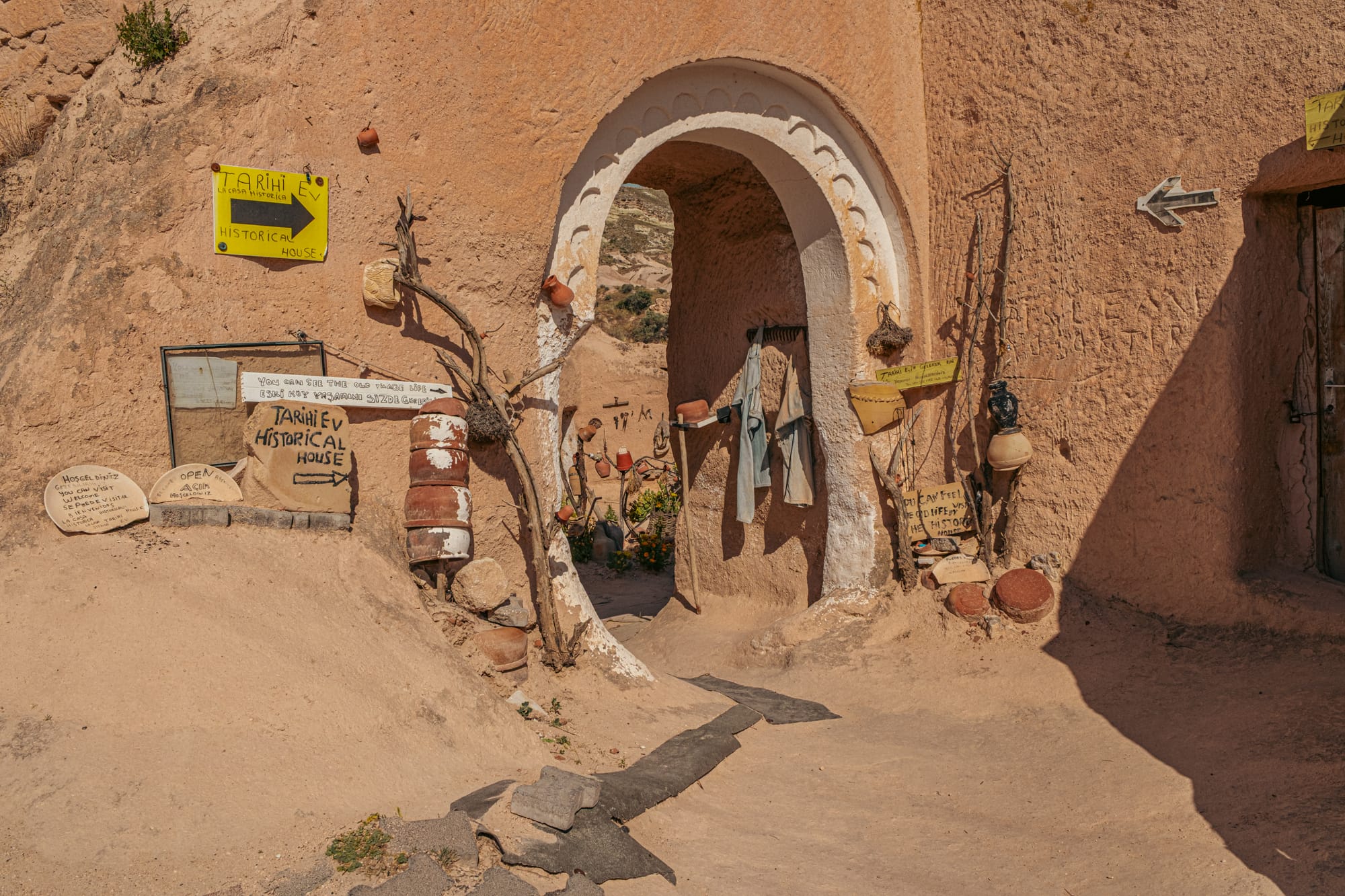
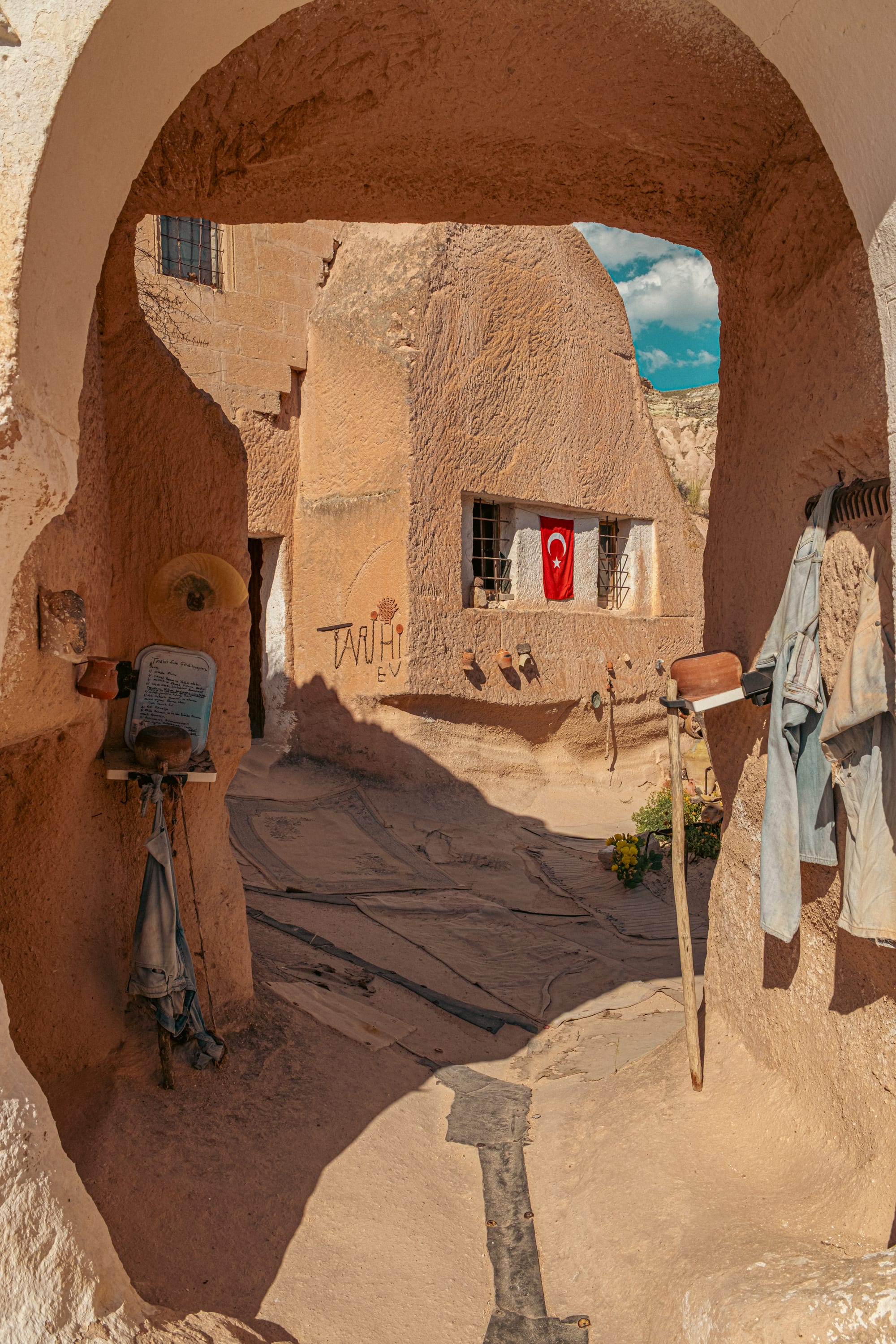
Entrance to Tarihi Ev Historical House, marked by rustic signs and weathered stone archways
As we stepped closer, the texture of the wall came into focus—stones of uneven size fitted tightly together, with patches of moss and small plants rooted in the tiniest crevices.
Inside, the sunlight softened, and a different kind of stillness took hold. The sounds of the street fell away, replaced by the muted rustle of leaves and the distant call of a bird. The scent shifted too—cool stone, damp earth, and something faintly floral.
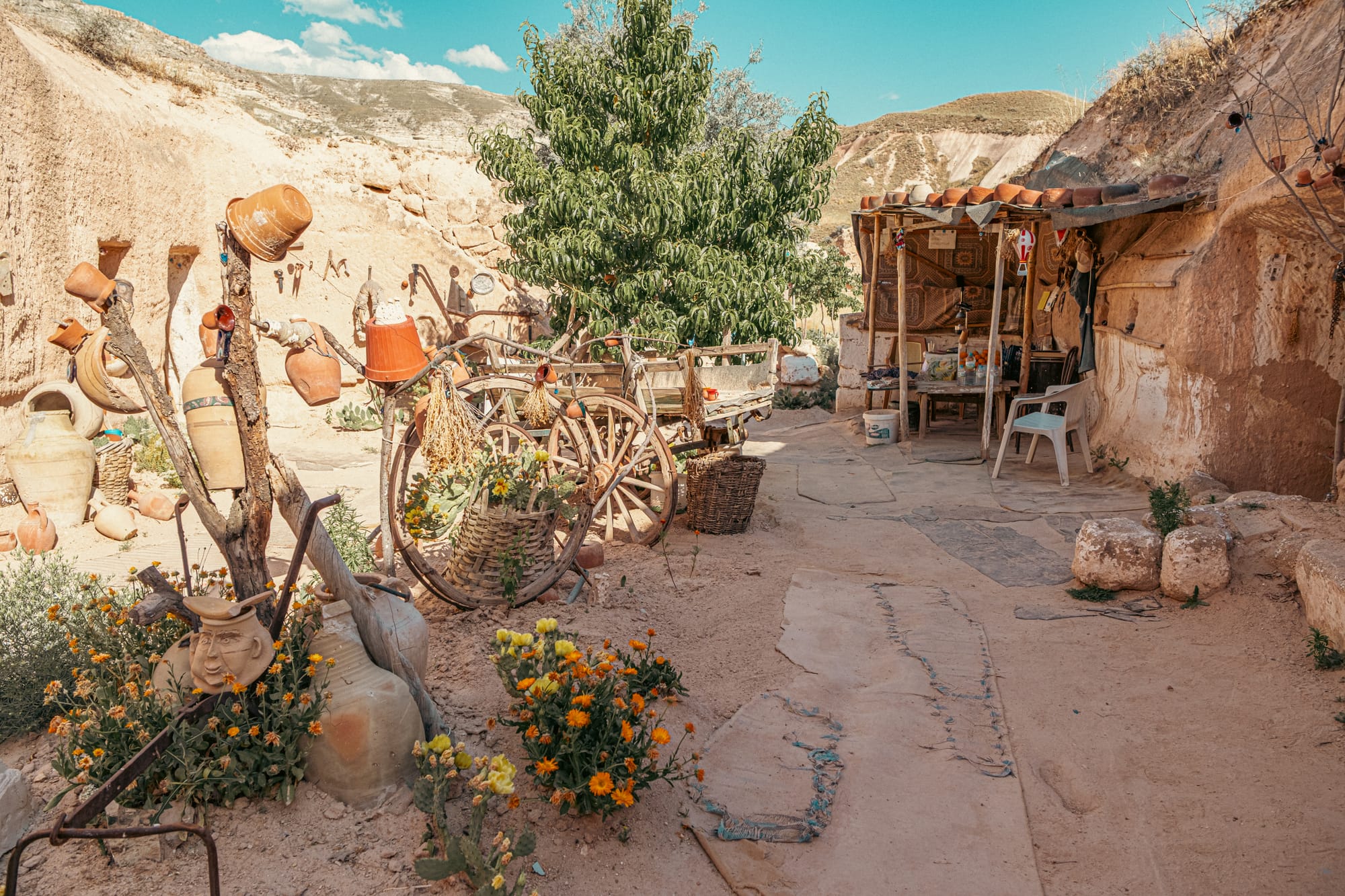
At the center of it all, the courtyard opened before us: a contained, breathing space where the life of the house seemed to gather. The walls around it were high and warm-toned, enclosing a patchwork of plants, potted flowers, and pathways worn smooth by use. It was a heart to the house, and from the first step inside, it set the pace for everything that followed.
The courtyard as a living heart
All the rooms face inward toward the courtyard, which blooms with life. Clusters of potted plants line the walls, and tall cactus plants crowned with vivid yellow flowers rise above them.
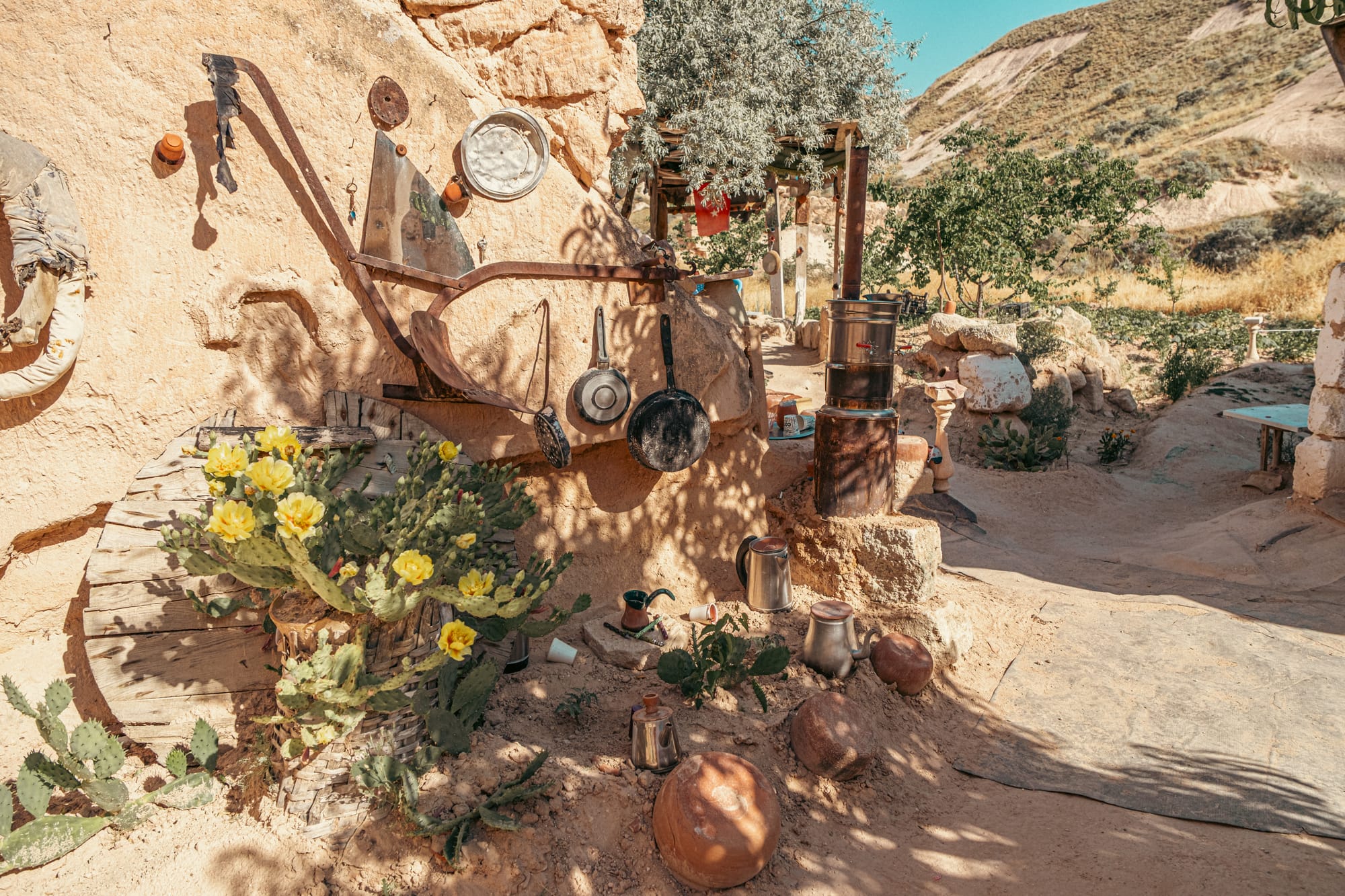
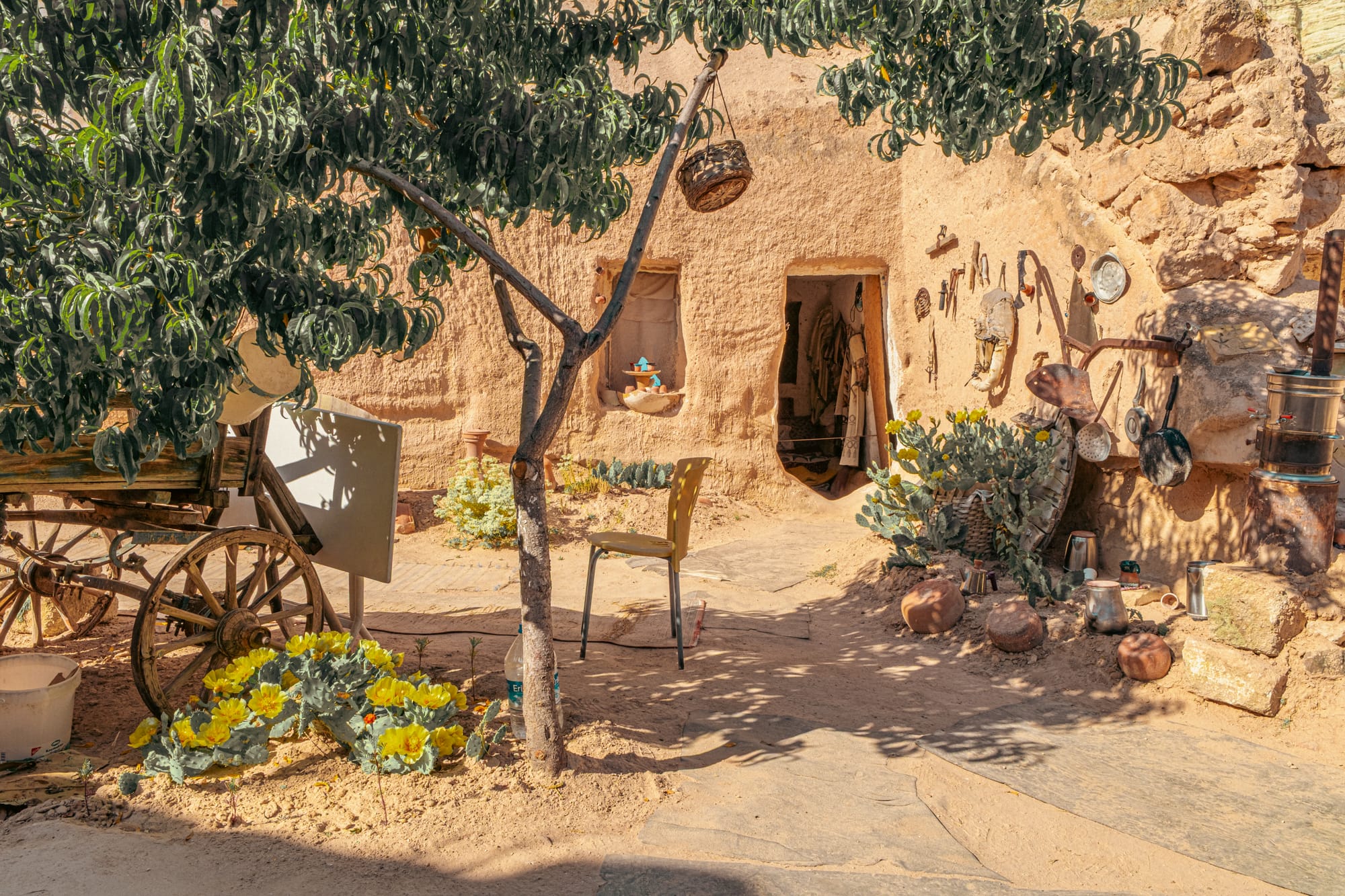
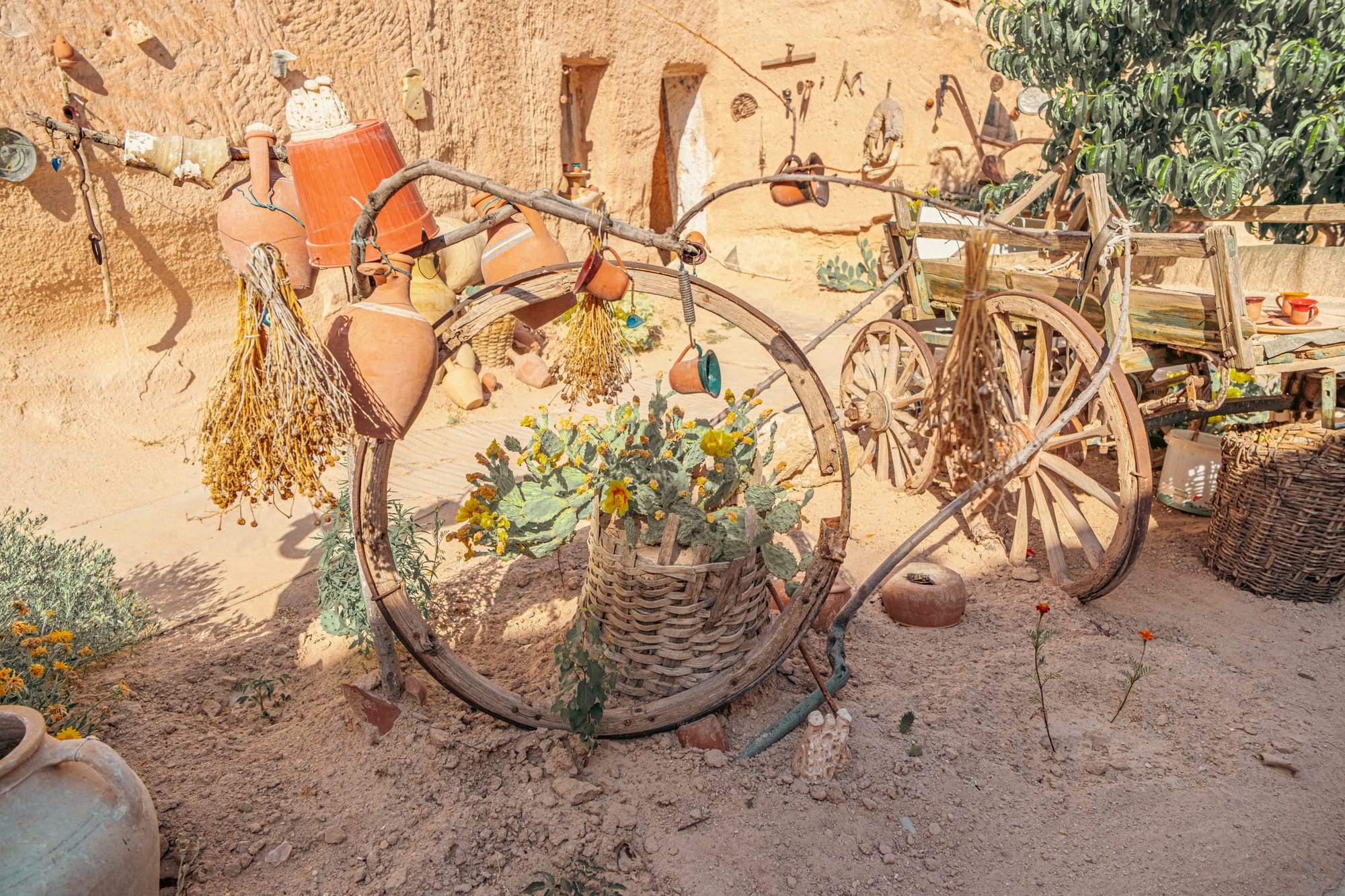
Courtyard at Tarihi Ev adorned with blooming cacti, rustic tools, and weathered wooden carts
The blooms catch the light in a way that seems to amplify their color, bright against the pale stone backdrop.
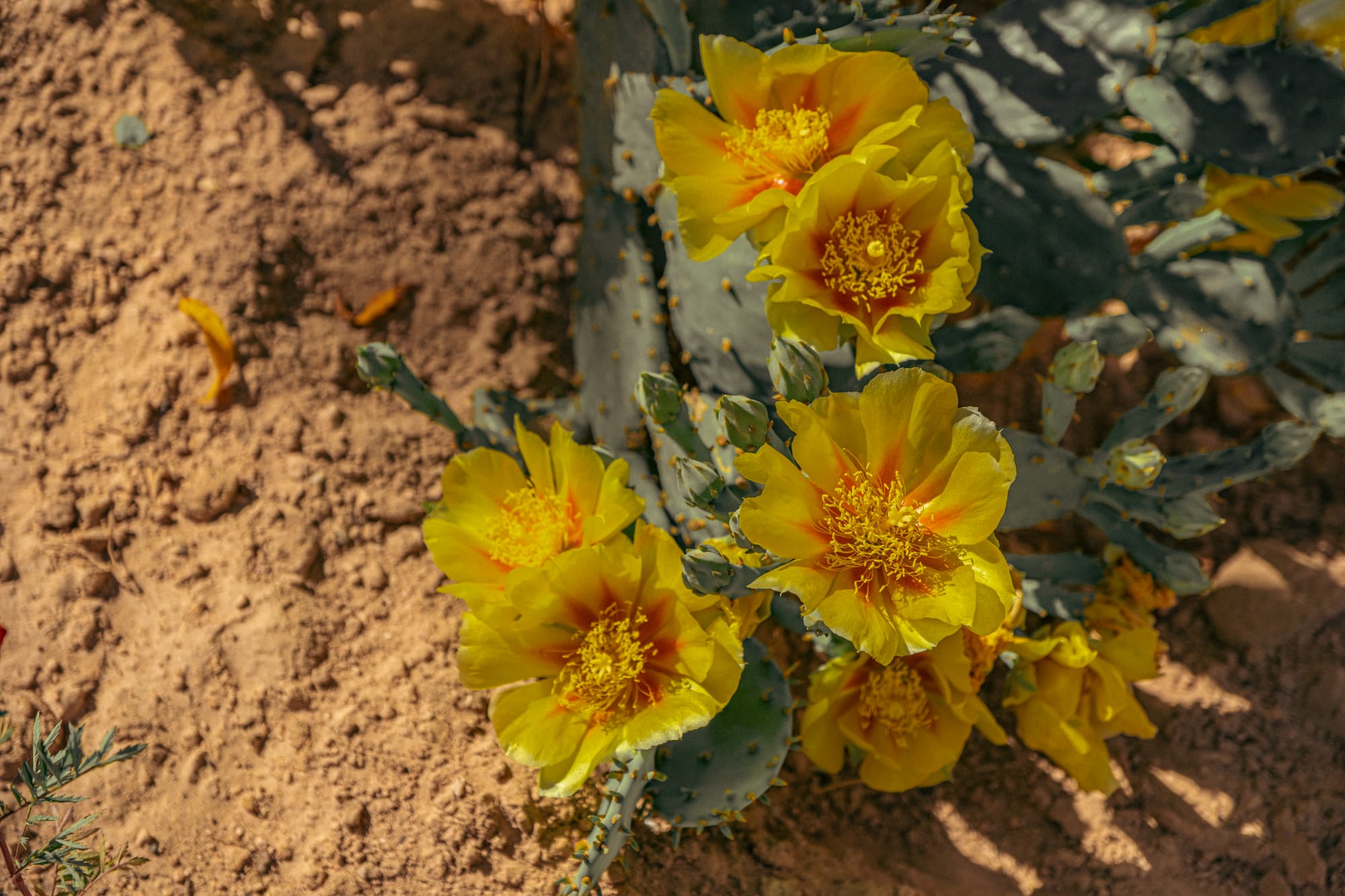
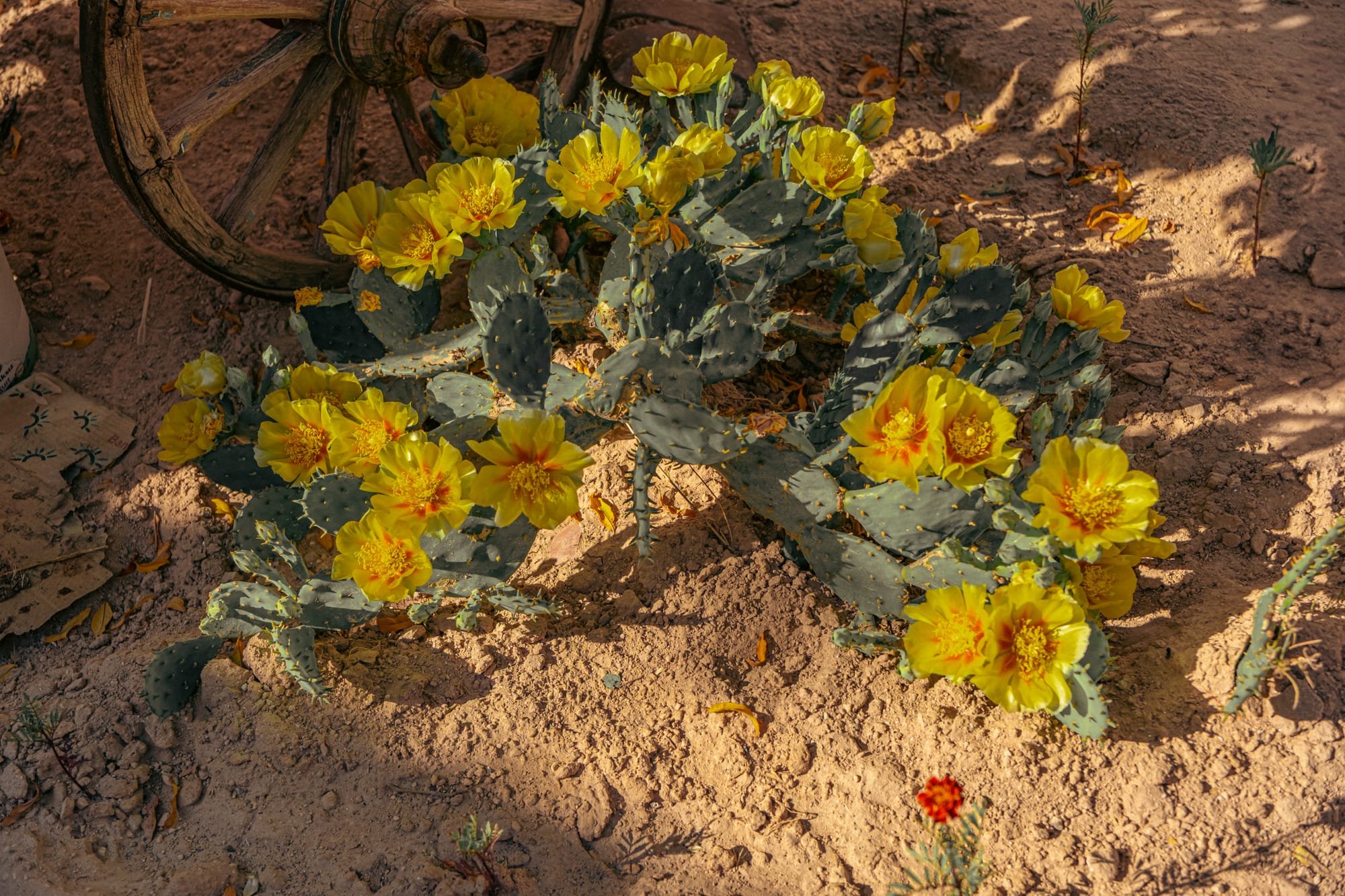
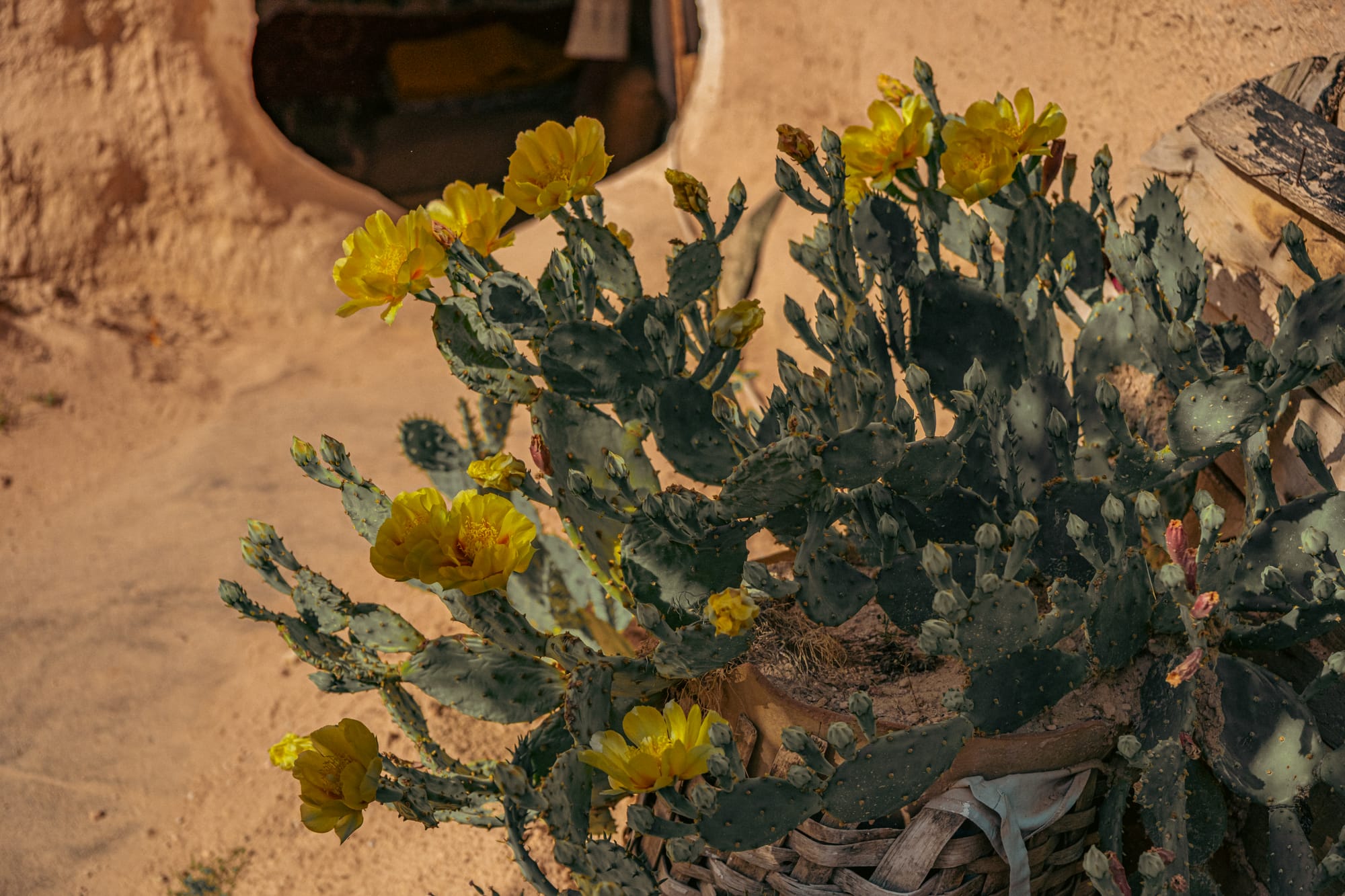
Vibrant yellow cactus blooms brighten the sunlit courtyard of Tarihi Ev Historical House
Paths of worn stone lead between doorways, making the courtyard feel like a natural gathering place.
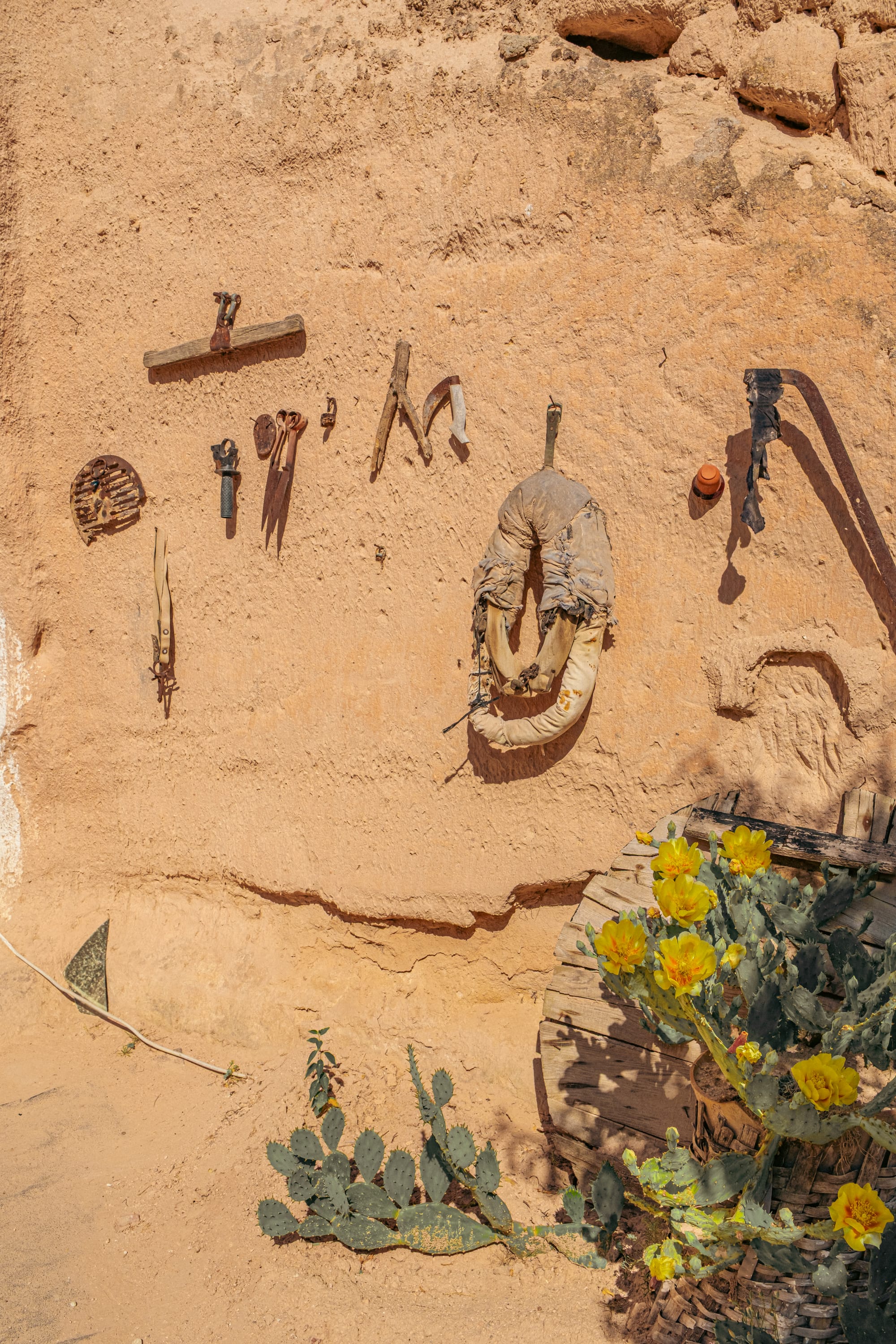
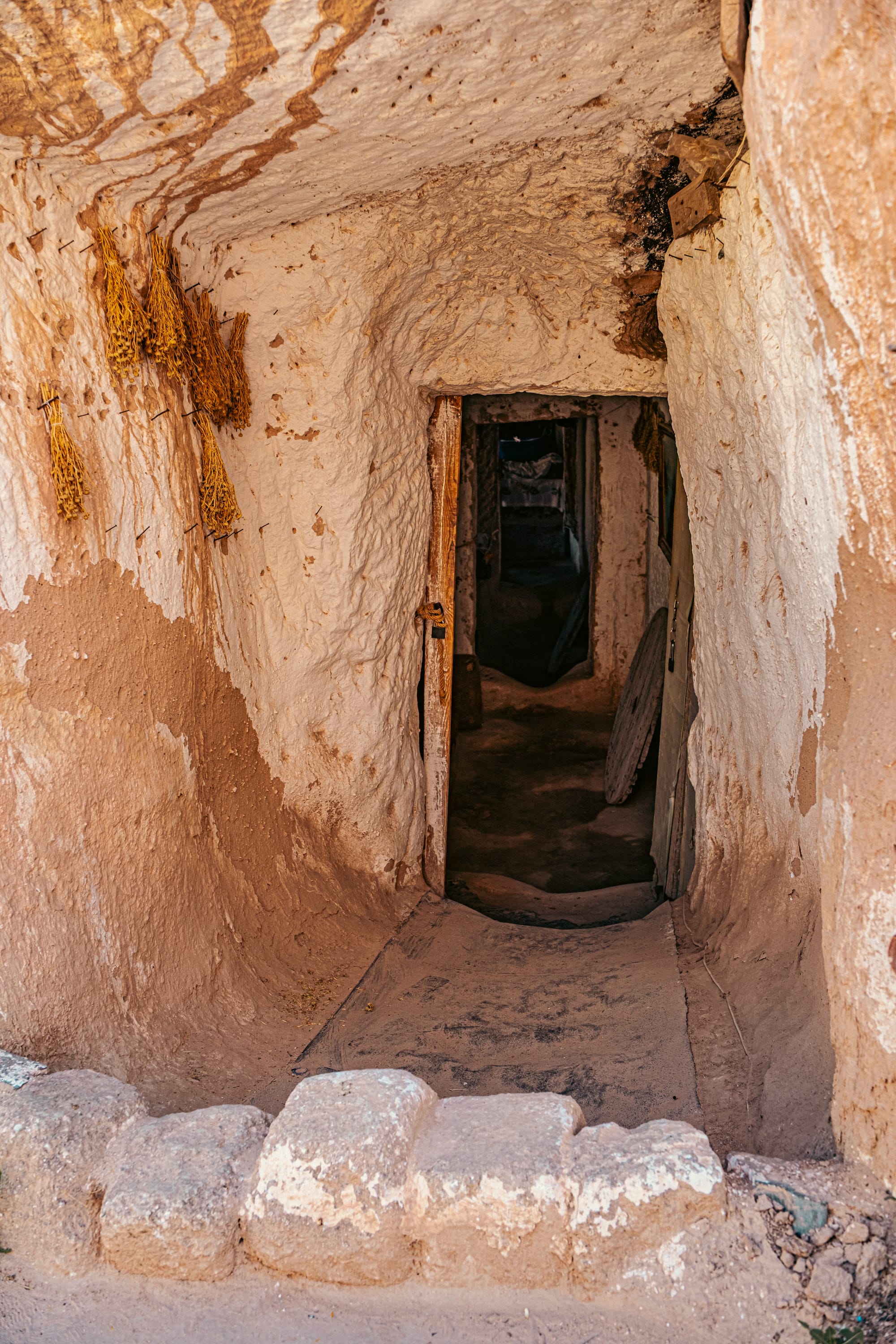
Courtyard wall with hanging tools and cactus blooms beside a tunnel entrance into the home
Even without people, it holds the memory of daily rhythms—doors opening in the morning, plants watered at the same time each day, conversations drifting between rooms.
A home turned living museum
The Tarihi Ev Historical House remains in the care of the same family that has owned it for generations. For a small fee, visitors are free to move at their own pace.
Each room has its own distinct character, yet all share the same architectural grounding: thick stone walls to keep out the summer heat, arched doorways that frame the view into the next space, and built-in benches along the walls.
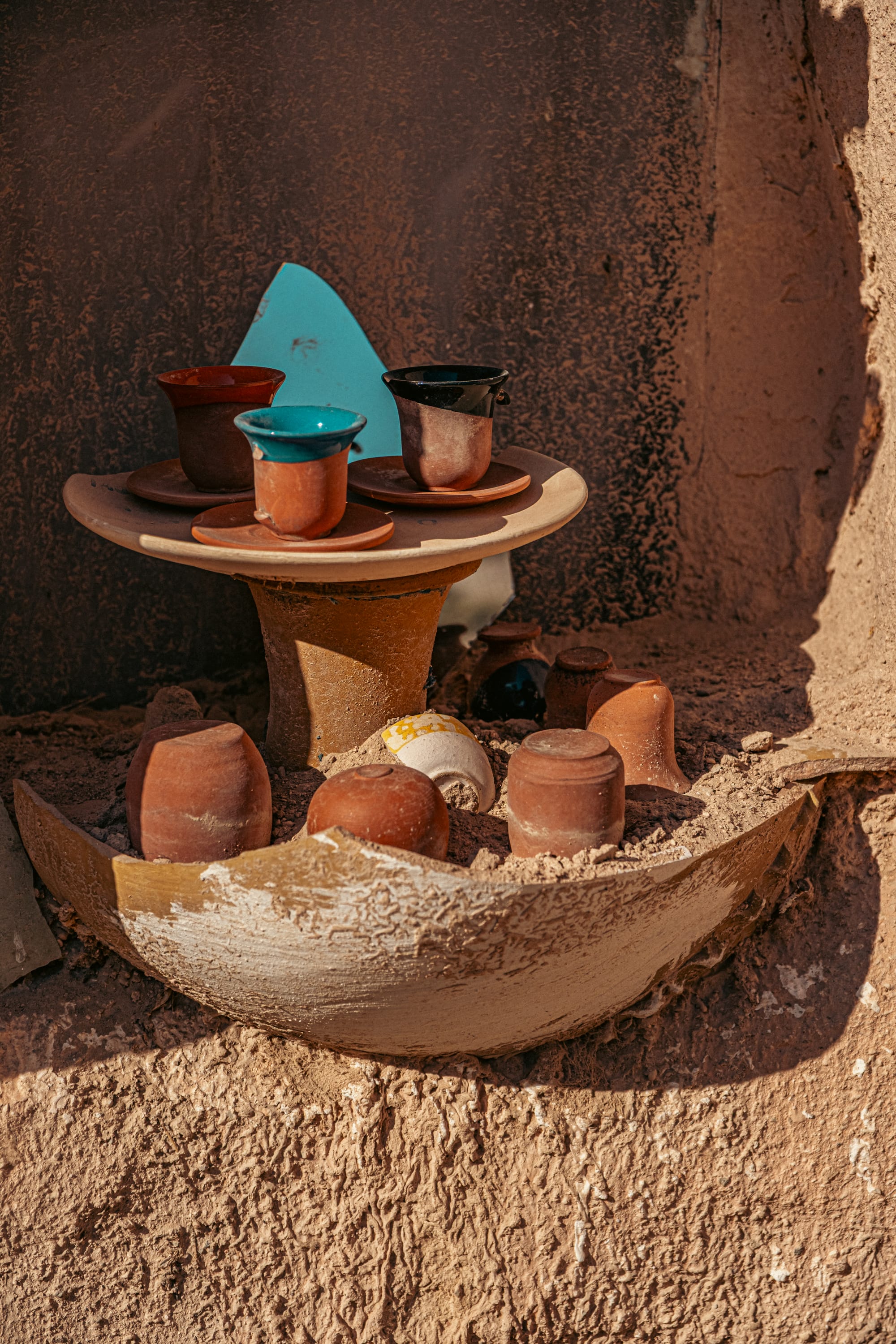
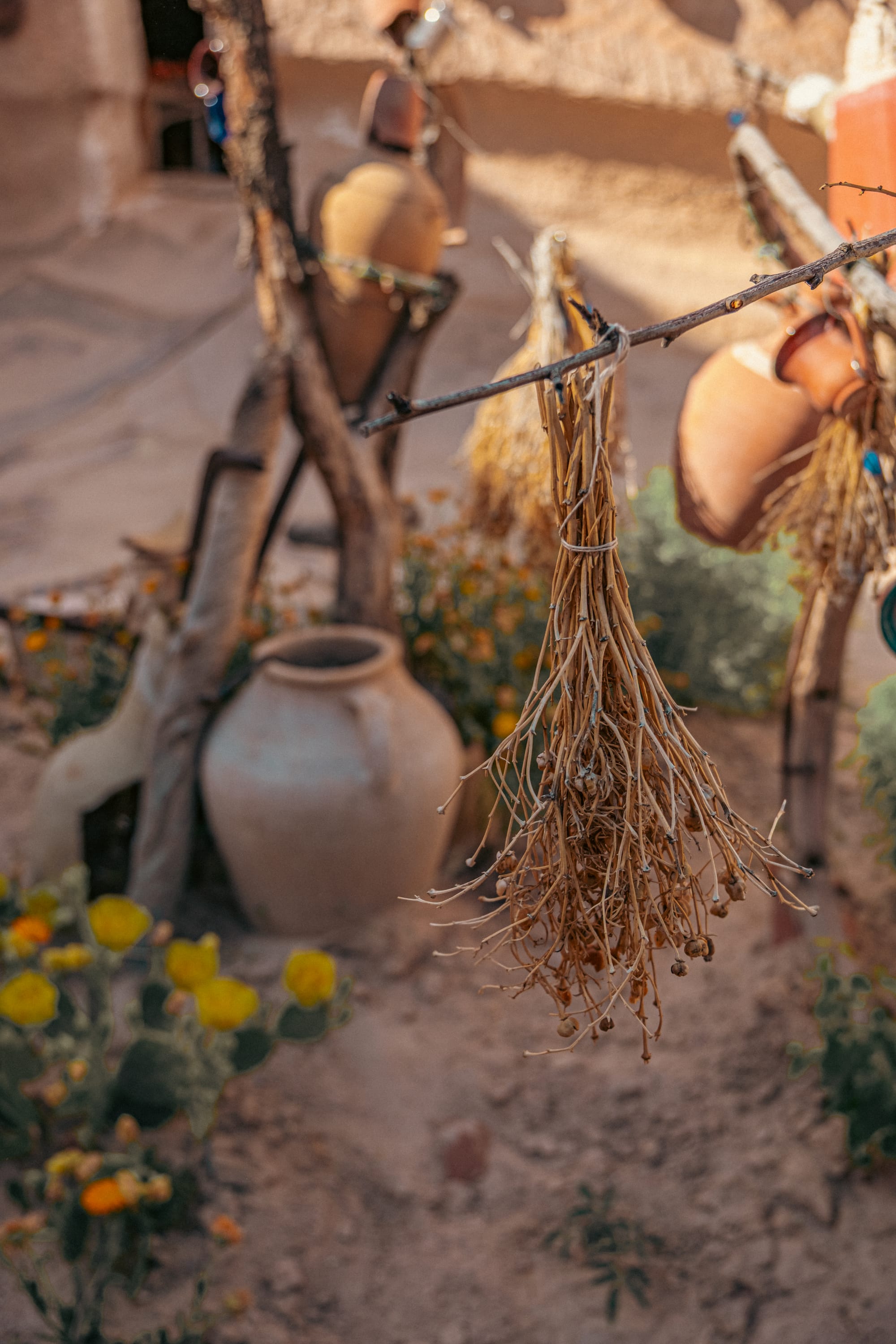
Clay cups displayed in a wall niche and dried herbs hanging beside courtyard pottery
Shelves are filled with copper kettles, ceramic bowls, and other tools of daily life from years past. None of it feels staged—it is arranged in a way that suggests these objects have simply been in the same place for decades, untouched except to be used.
The backyard and its views
Beyond the courtyard, the house opens toward the back, revealing a panoramic view of the surrounding mountains and valleys.
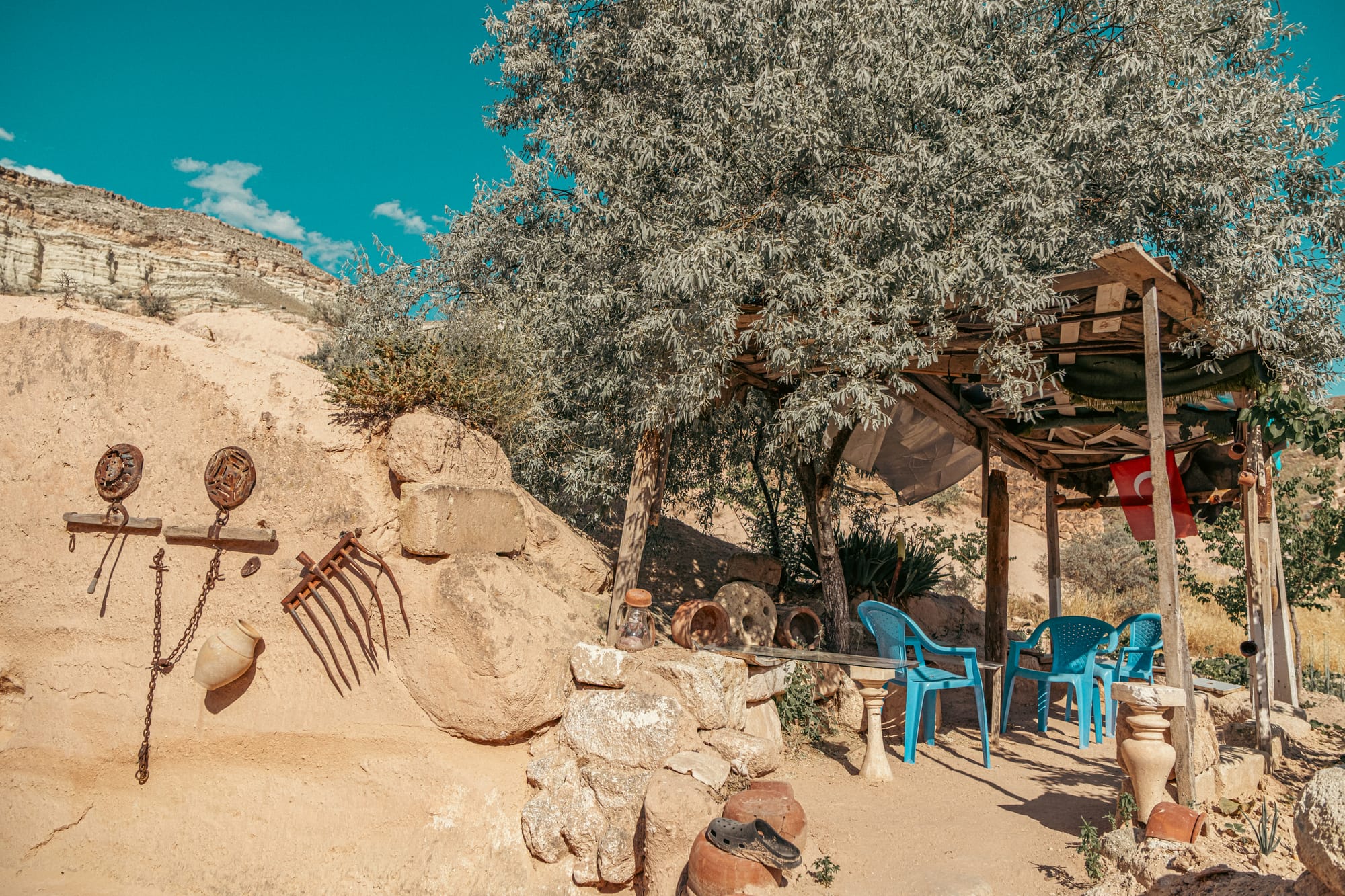
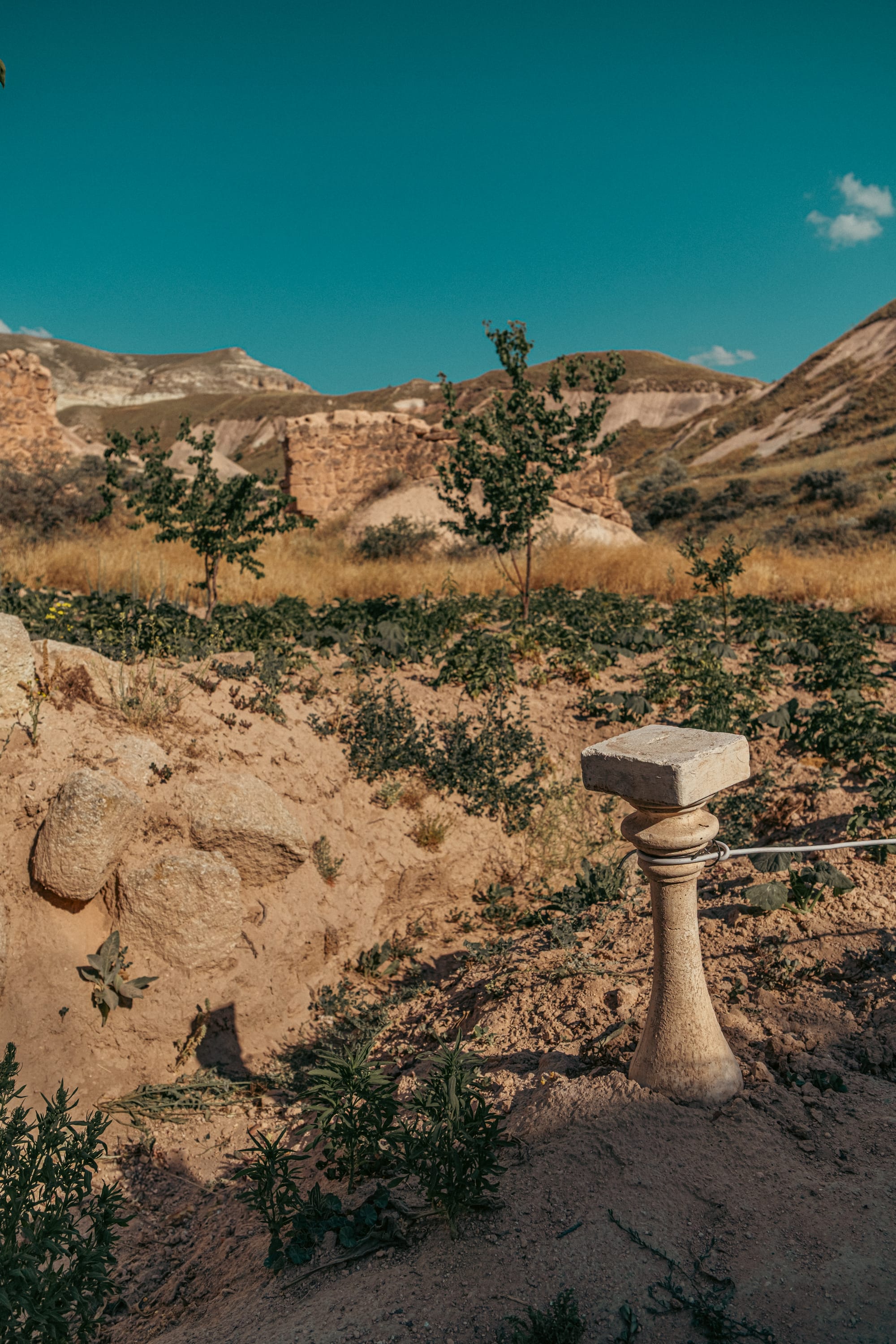
Shaded seating area beside rustic tools, overlooking fields and mountains
The village fades quickly into the raw forms of Cappadocia’s landscape: cliffs etched by erosion, ridges painted in shades of cream and rust, and distant slopes softened by time. Standing here feels like being on a threshold between the enclosed intimacy of the home and the vast openness beyond.
Inside the rooms
The interiors are textured and deeply atmospheric. Floors are covered with kilims whose colors have softened with age—reds, blues, and ochres worn by countless footsteps. Low wooden tables rest beside benches draped in patterned fabrics, and on the walls hang thick blankets and woven tapestries, both decorative and practical.
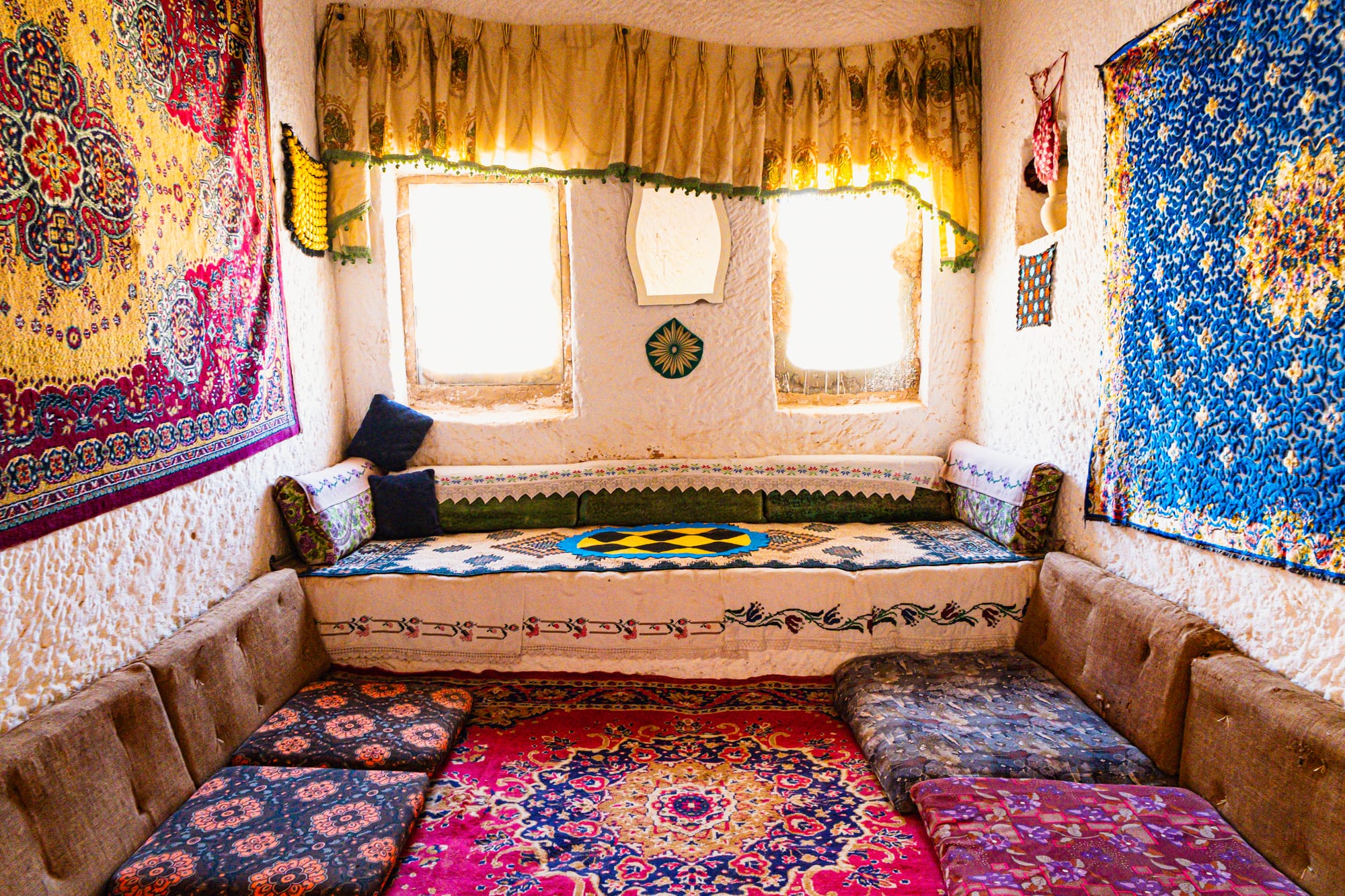
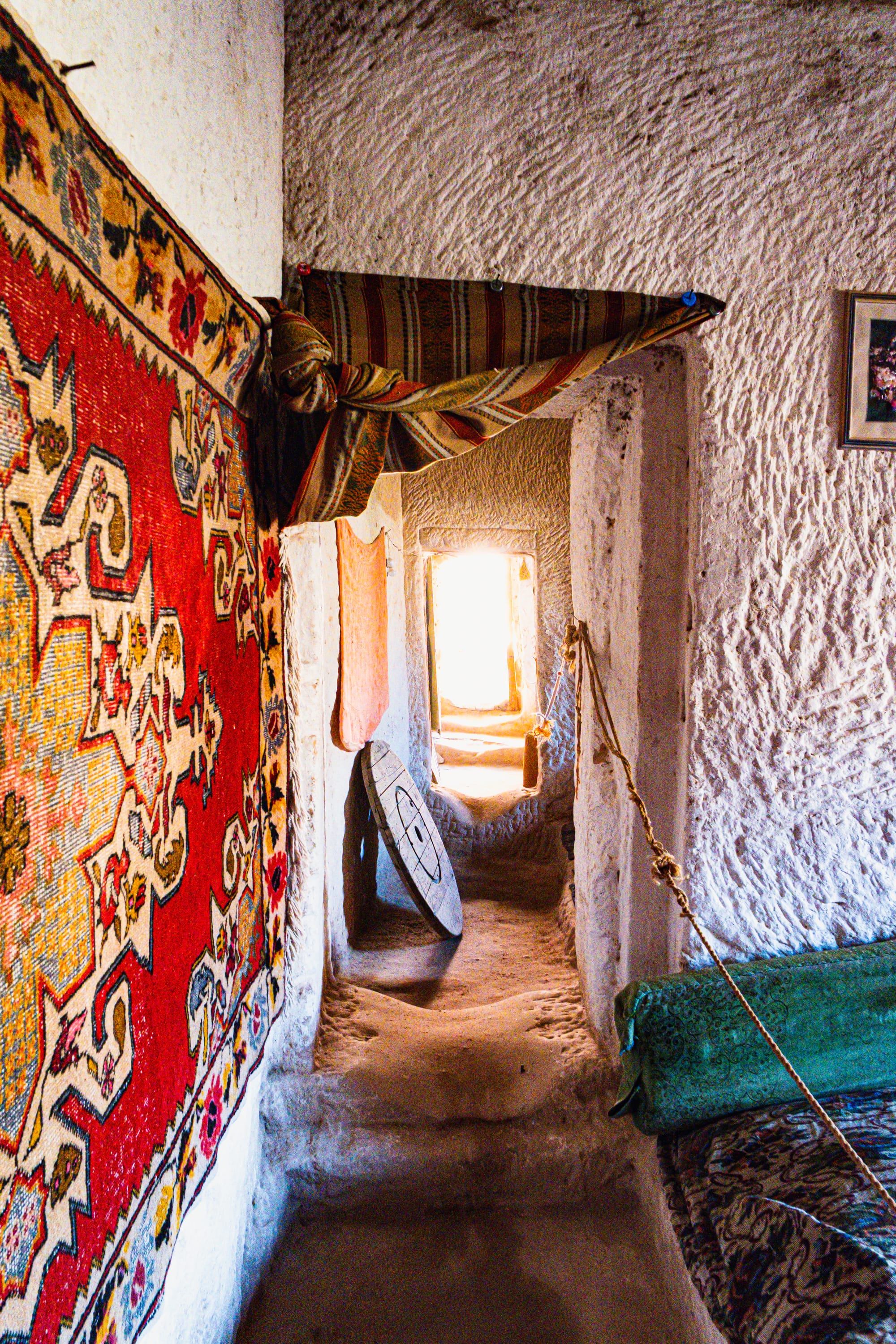
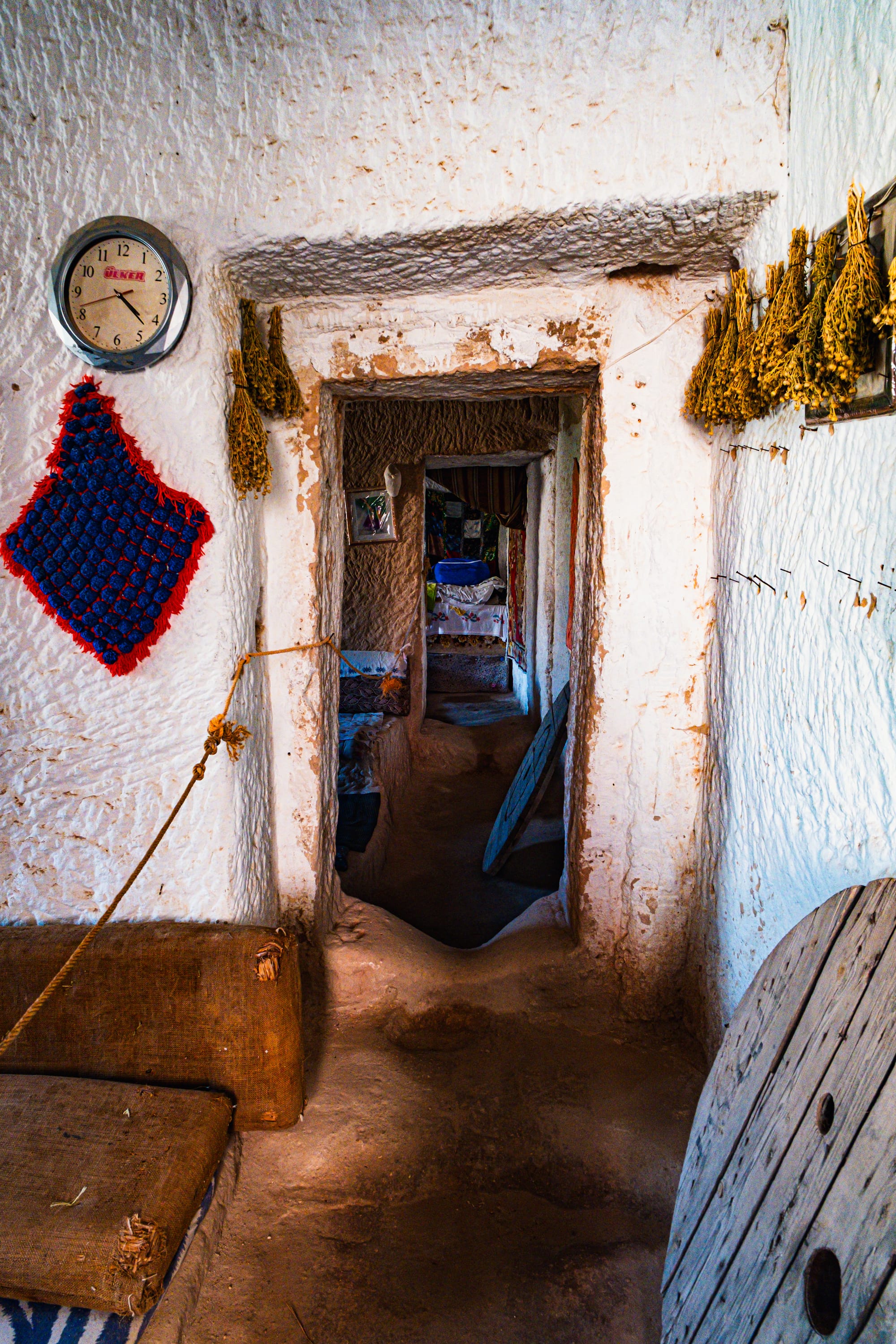
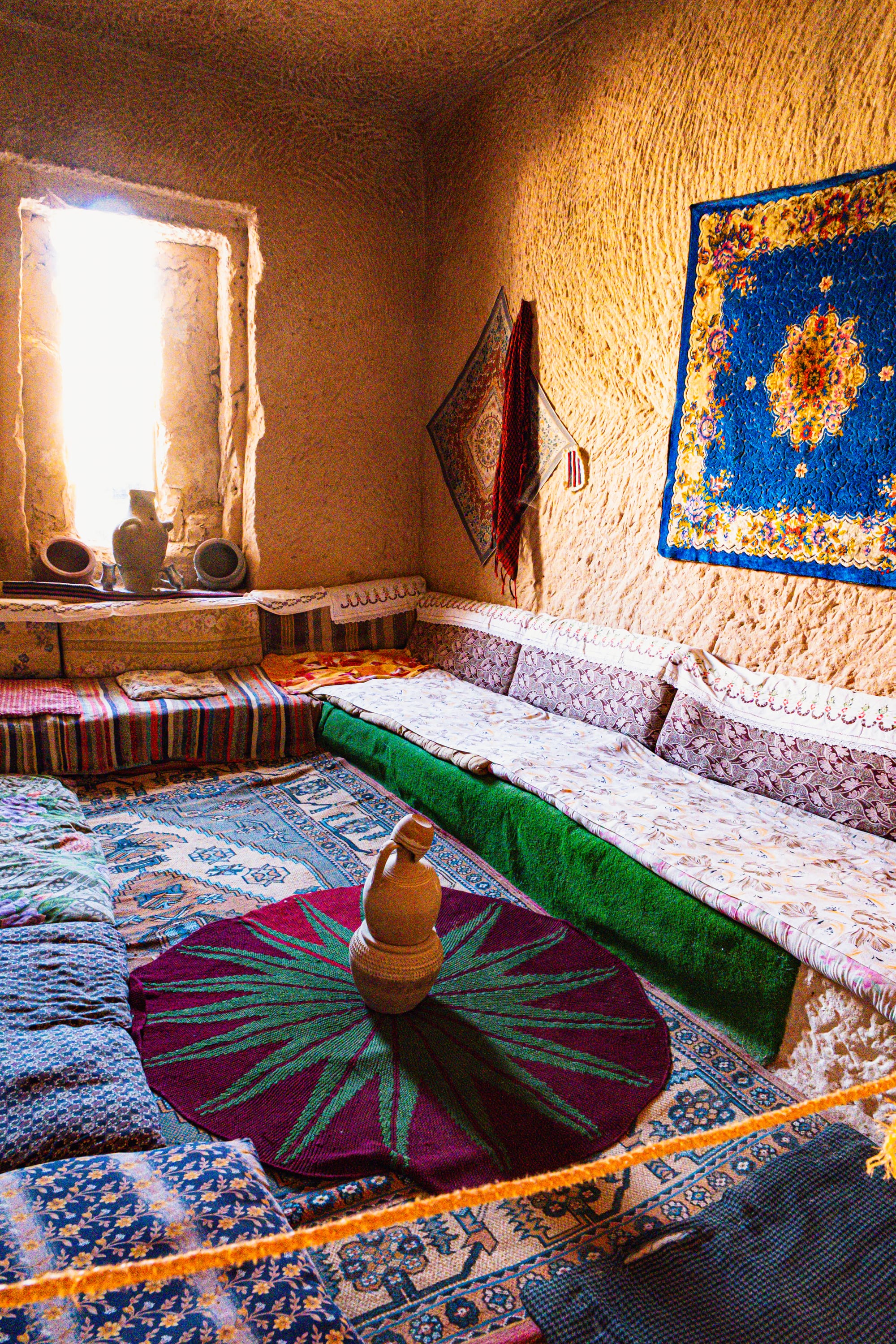
Textile-adorned hallways and colorful, cozy rooms showcase the warmth of Tarihi Ev’s interiors
Some rooms hold wood-burning stoves encircled by cushions, ready for winter gatherings. Others are dedicated to storage and display—shelves lined with brass trays, clay jars, and delicate glassware. In one room, a row of amphorae stands against the wall, their curved surfaces marked by decades of handling.
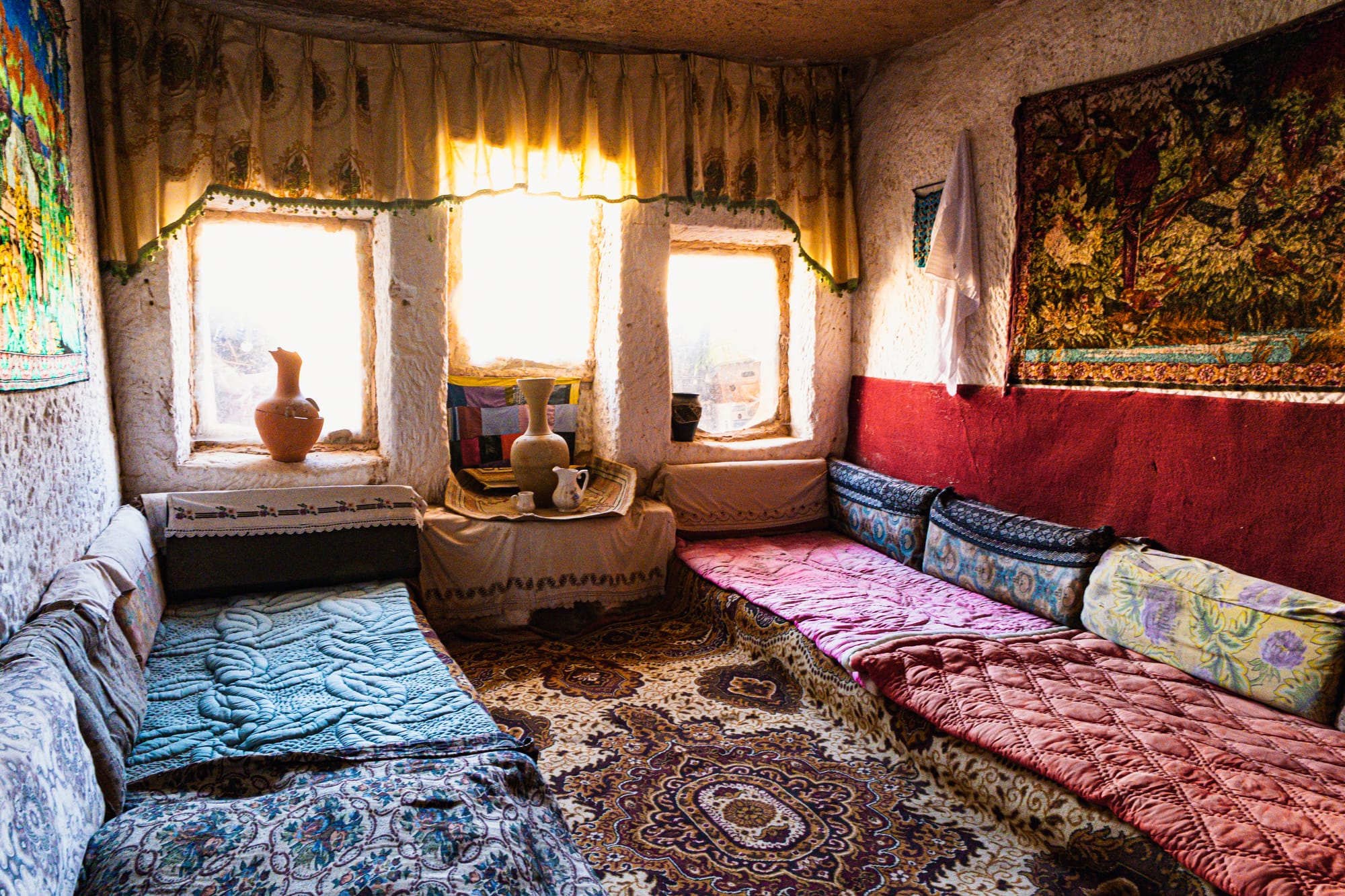
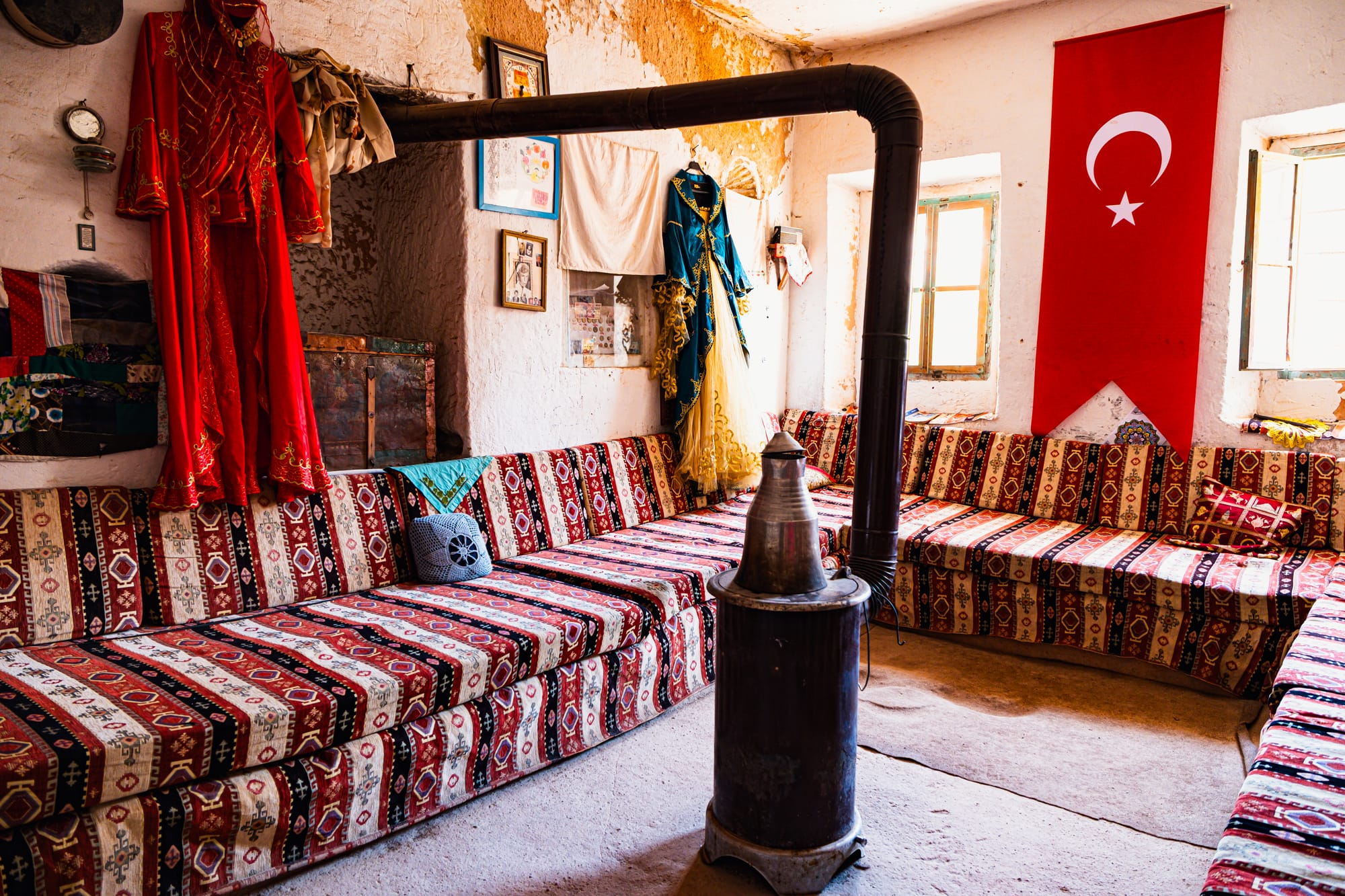
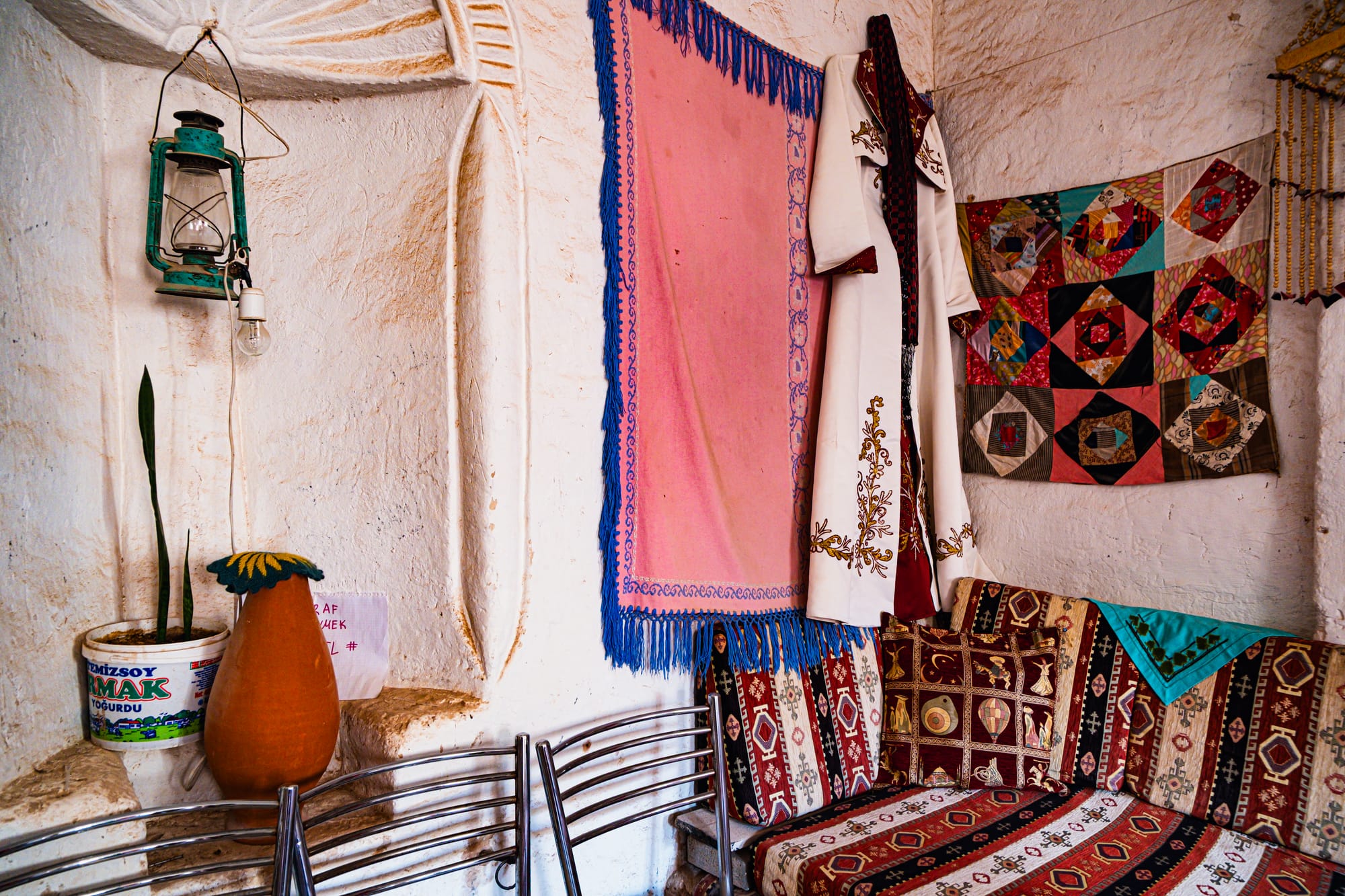
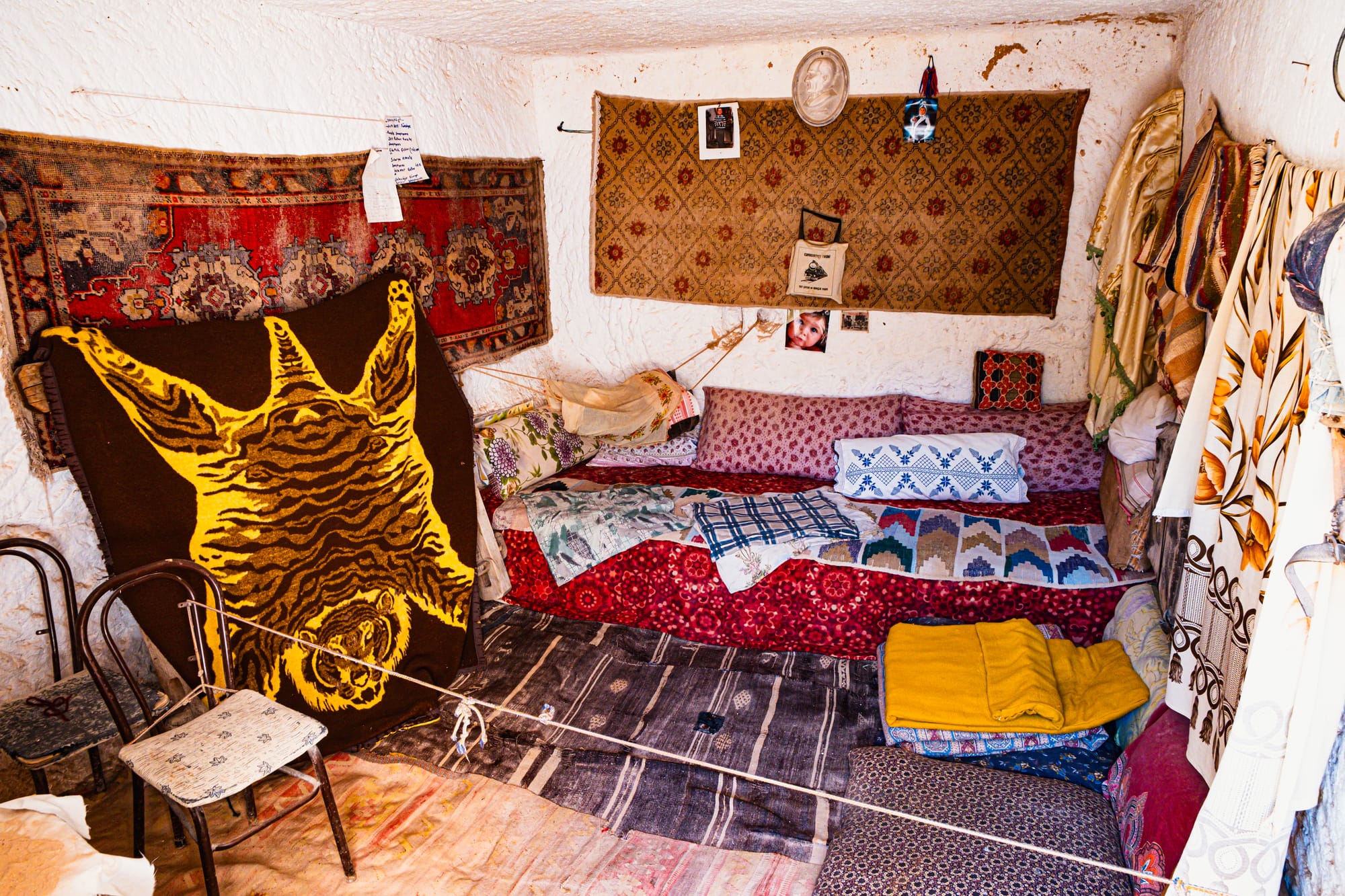
Colorful, eclectic rooms at Tarihi Ev decorated with patterned textiles, traditional seating, and local artifacts
Light changes the atmosphere hour by hour. In the morning, soft light spills across the rugs, catching the edges of embroidery. By midday, bright shafts illuminate small details—patterns in the weave of a cushion, the glint of copper. Late afternoon warms everything to a golden hue, the colors of the room deepening as shadows lengthen.
Objects as memory
Many objects seem to carry their own narratives. A wooden loom stands ready as if the weaver had just stepped away. Leather saddlebags hang from a beam, their stitching worn but intact. Clay jars share shelves with embroidered linens, the practical and the ornamental existing side by side.
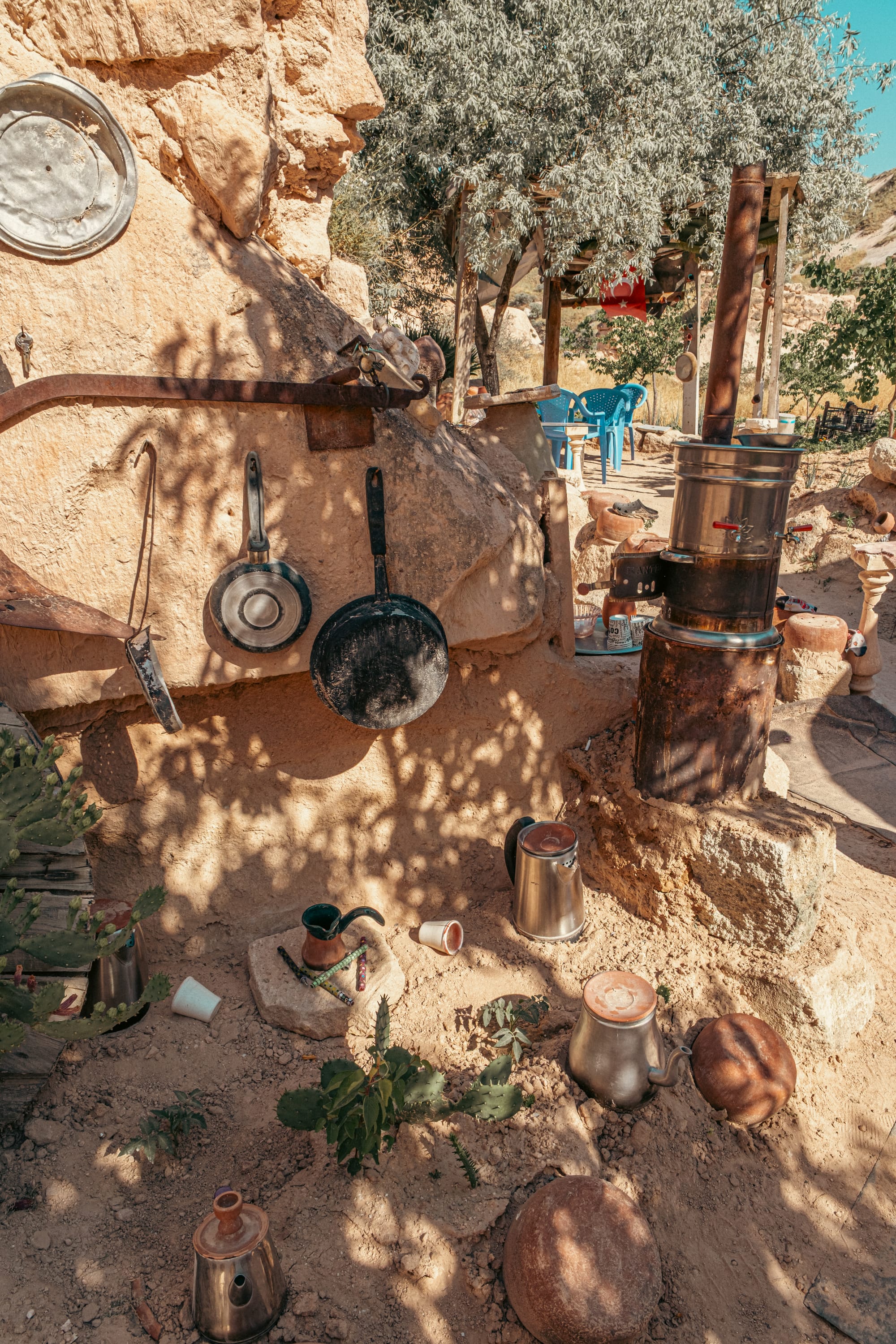
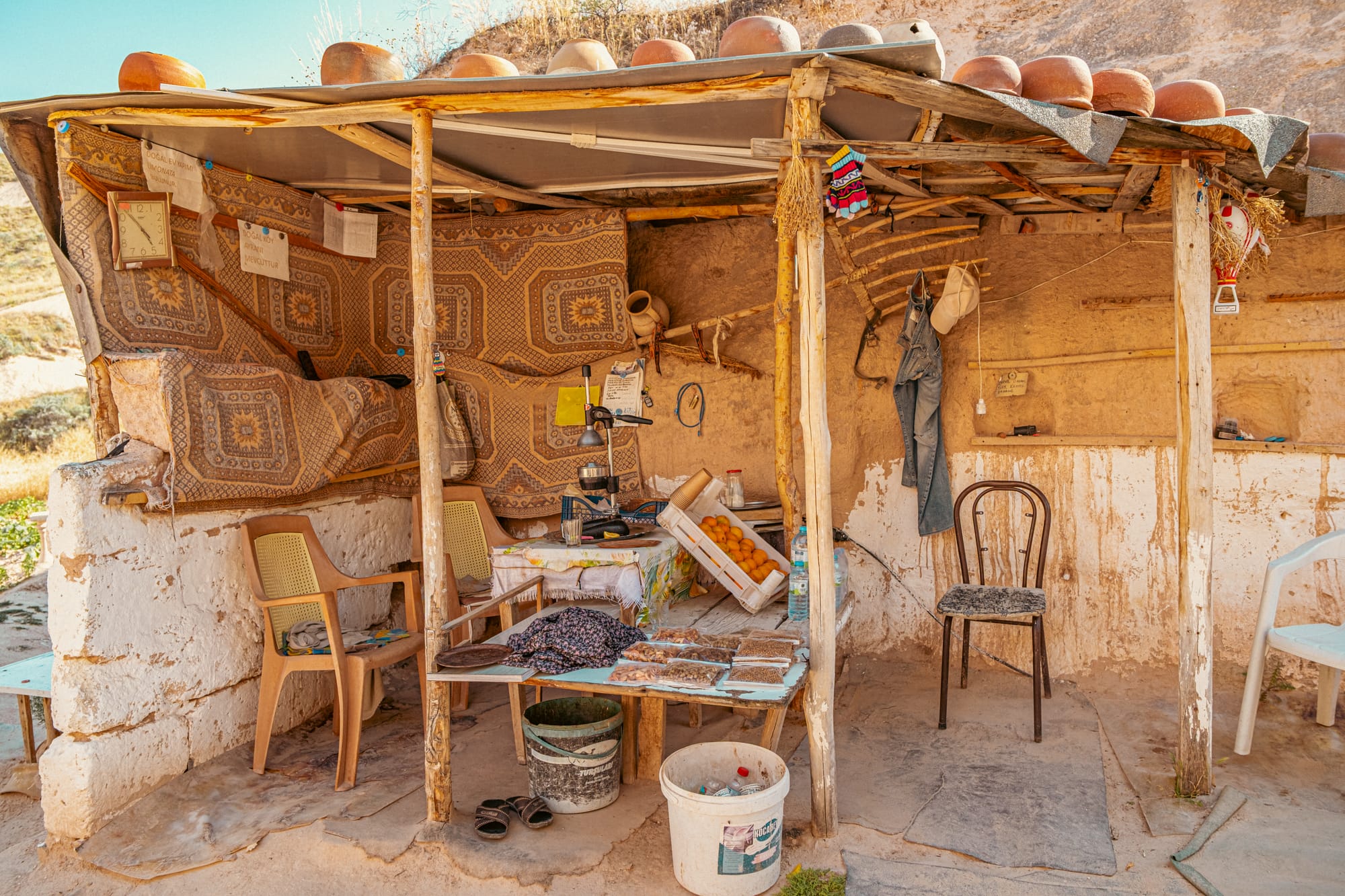
Outdoor cooking area with hanging pans and kettles beside a shaded stall
Textiles are everywhere—embroidered pillowcases, folded blankets, wall hangings—each with a texture that invites touch. They suggest the steady work of hands over years, each piece a small act of craft and care.
The architecture’s quiet resilience
The structure of the house wears its age without apology. The plaster bears fine cracks, the stone floors dip where many feet have passed, and the wood above the doorways has been darkened by time.
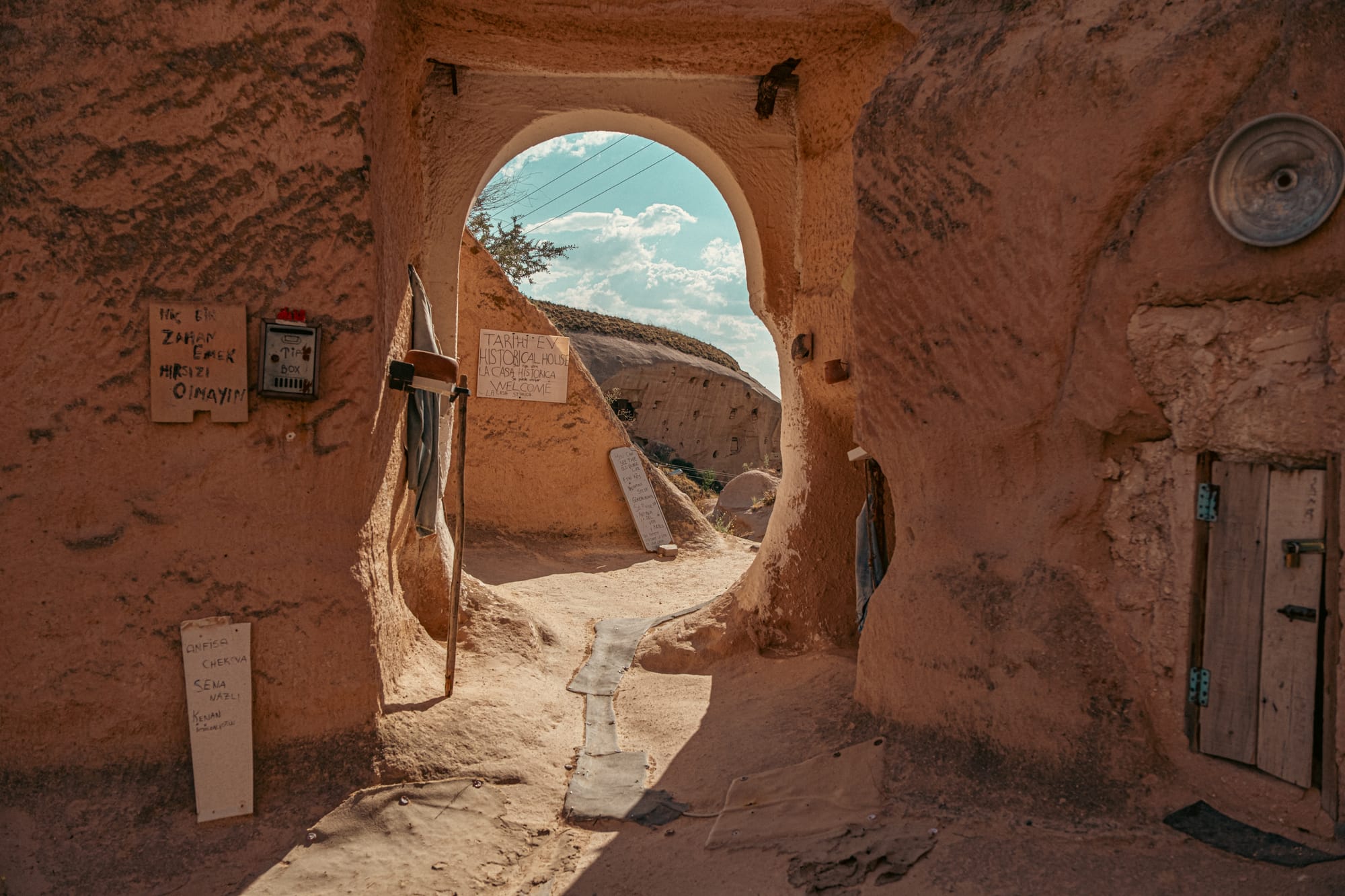
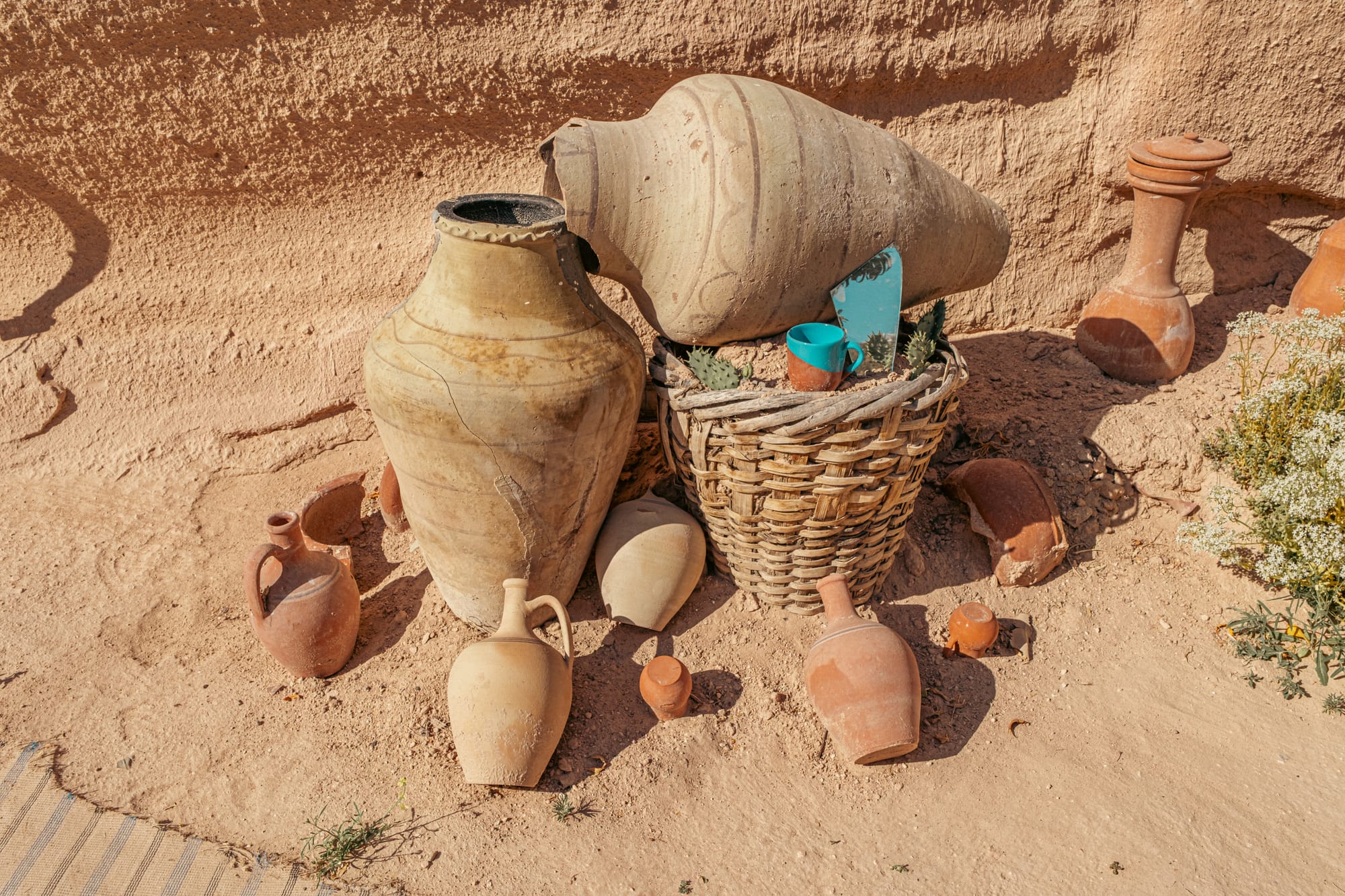
Arched entrance and a display of rustic clay vessels at Tarihi Ev Historical House
These marks of use add to the house’s sense of permanence, showing how it has adapted to decades of change without losing its form.
Moving through the space
Walking through Tarihi Ev is a gradual unfolding—courtyard to room, room to backyard, back again. The flow of movement alternates between shaded, enclosed spaces and open, light-filled views.
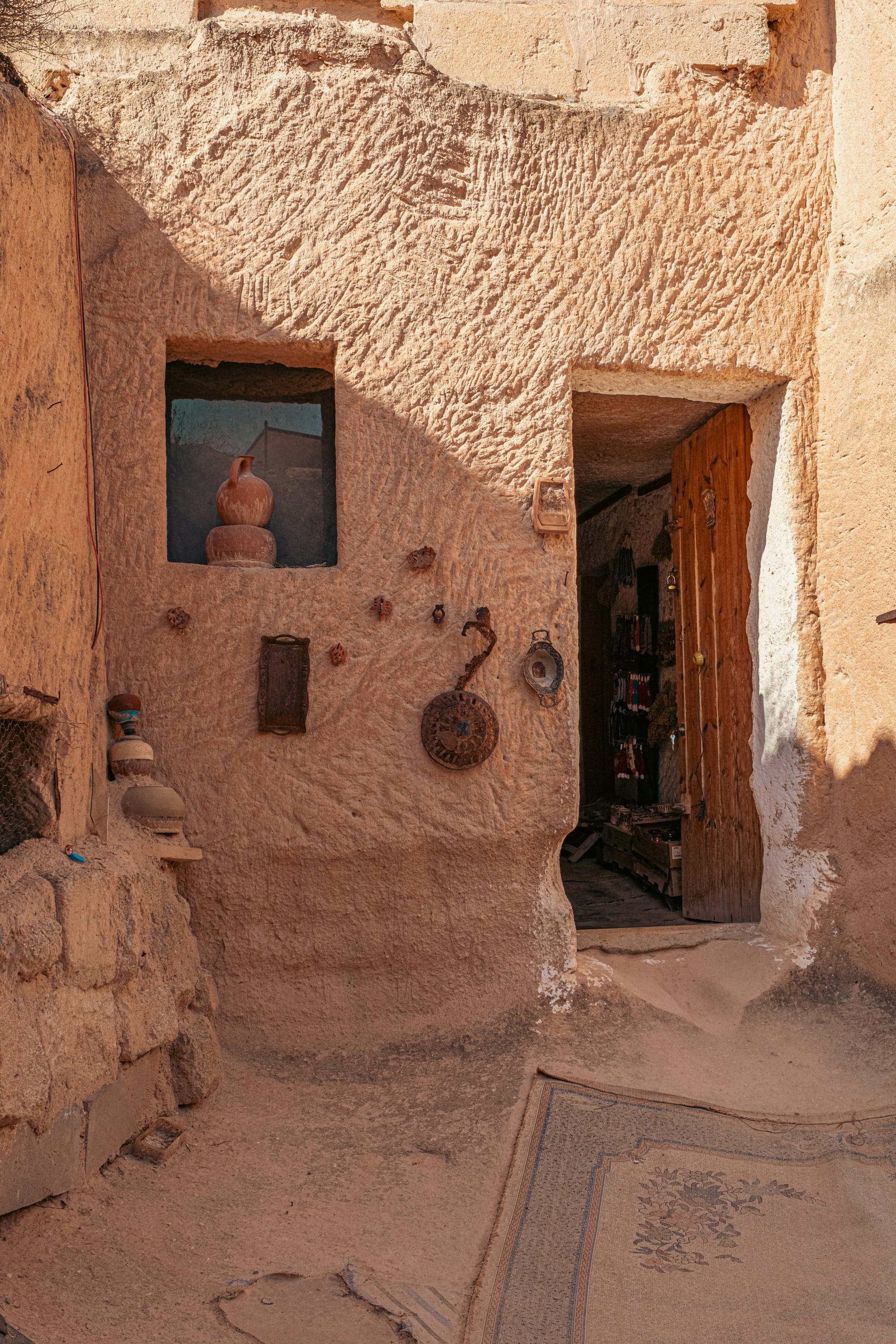
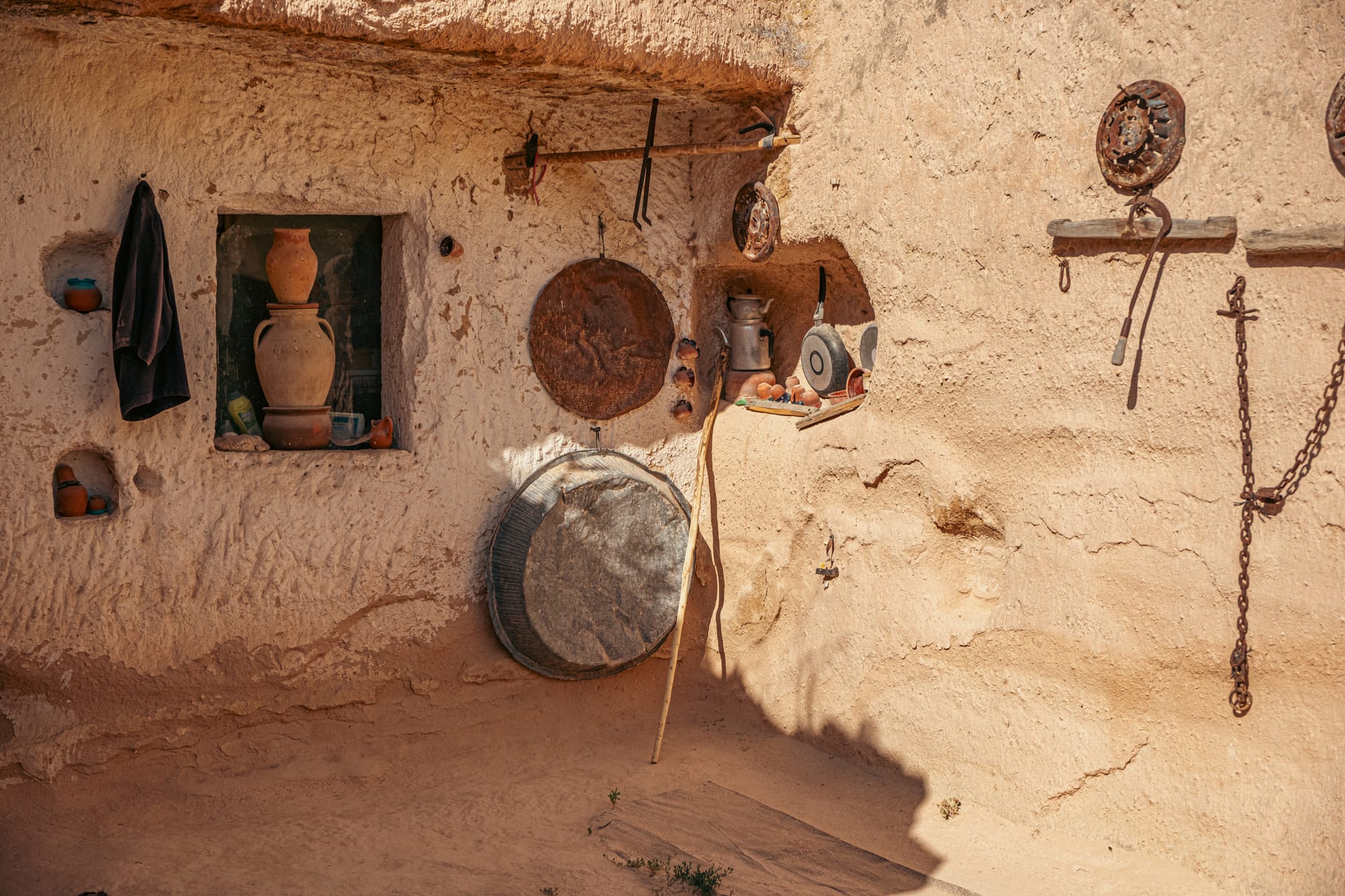
Clay vessels, metal trays, and rustic tools displayed on the sunlit walls of Tarihi Ev
In each shift, the sensory details change: the smell of stone warmed by sun, the feel of a cool floor underfoot, the sound of wind moving through the courtyard plants.
A place worth lingering in
What makes the Tarihi Ev Historical House compelling is not just its preserved architecture or its collection of objects, but the way these elements combine into a living sense of place.
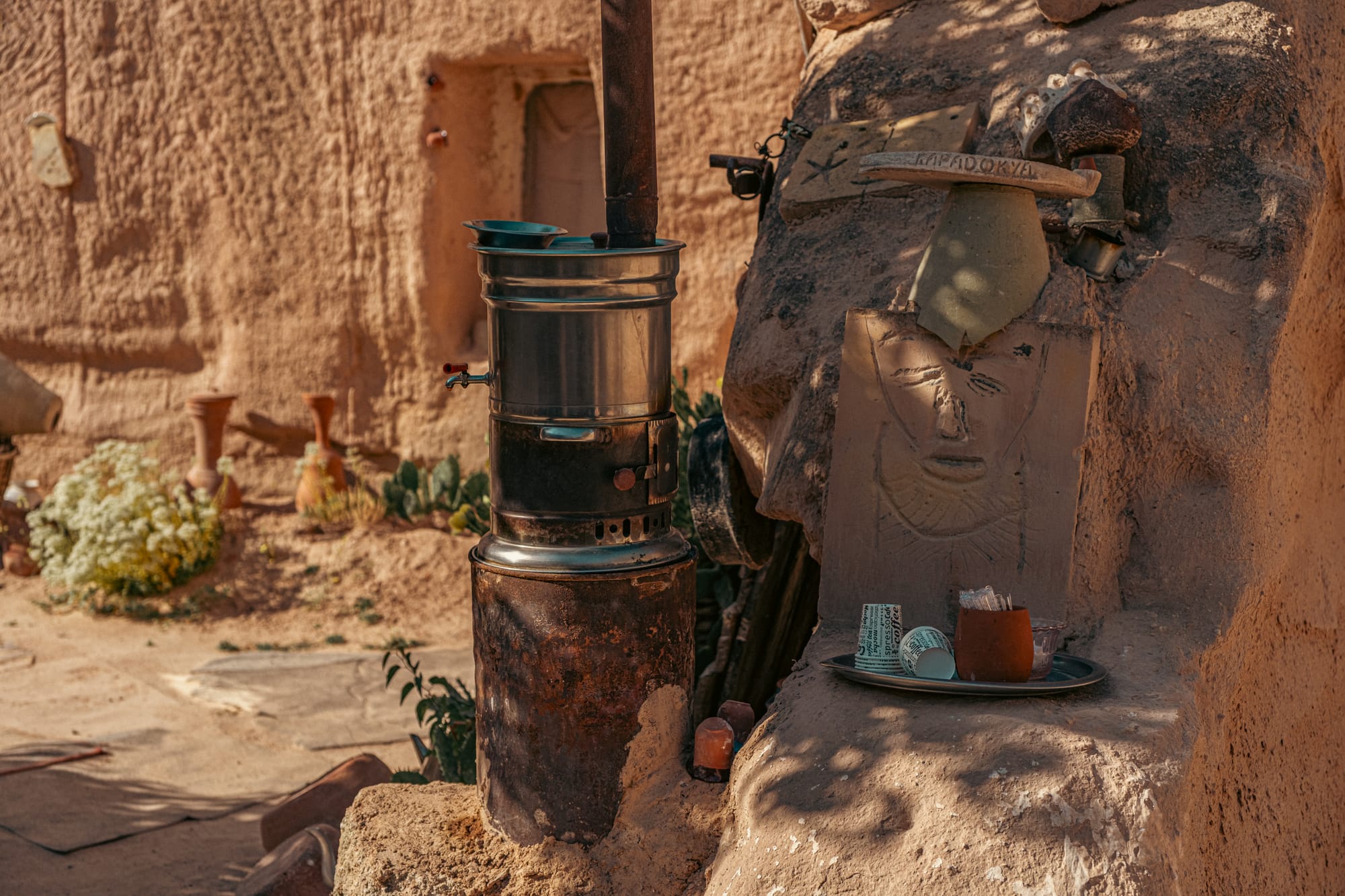
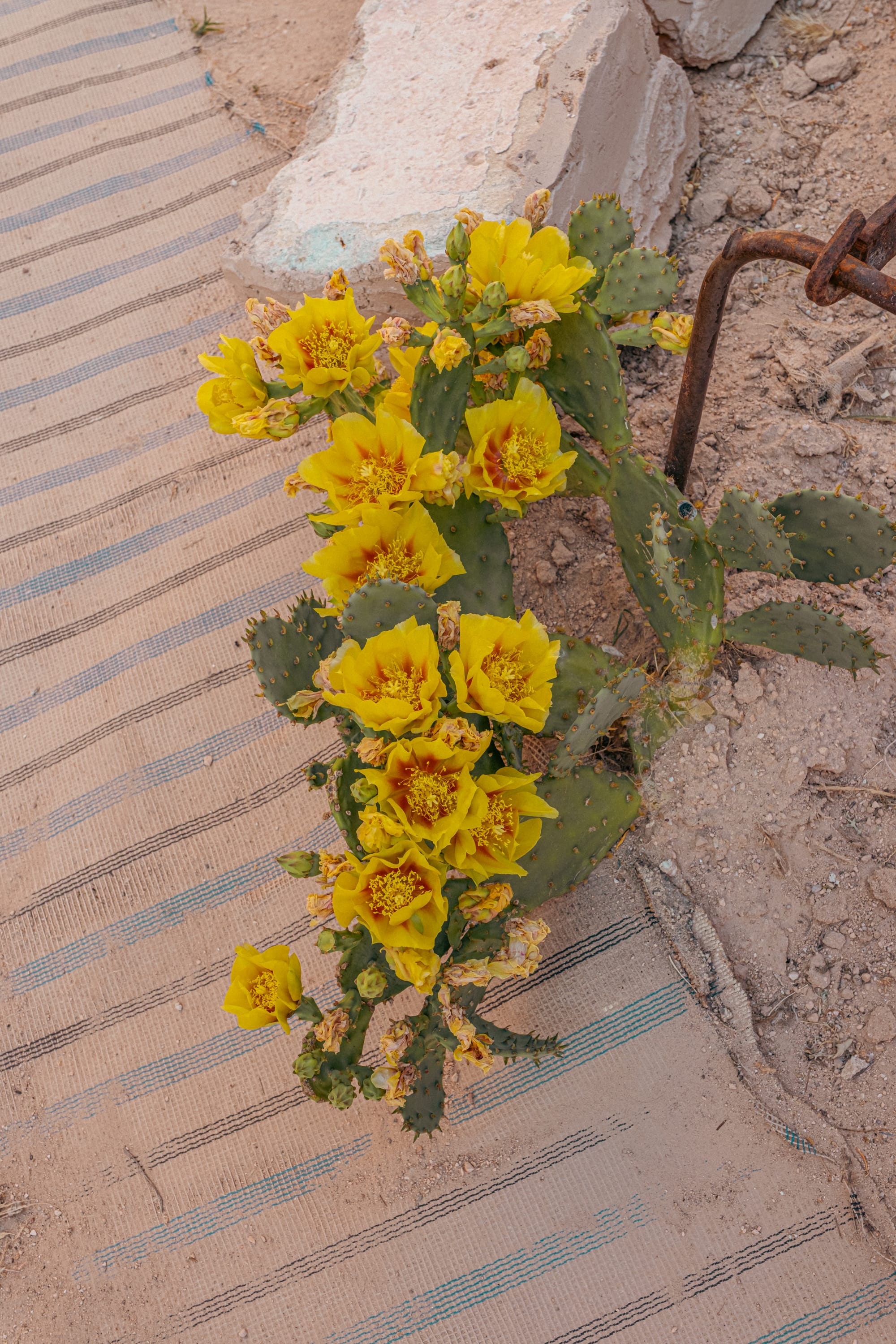
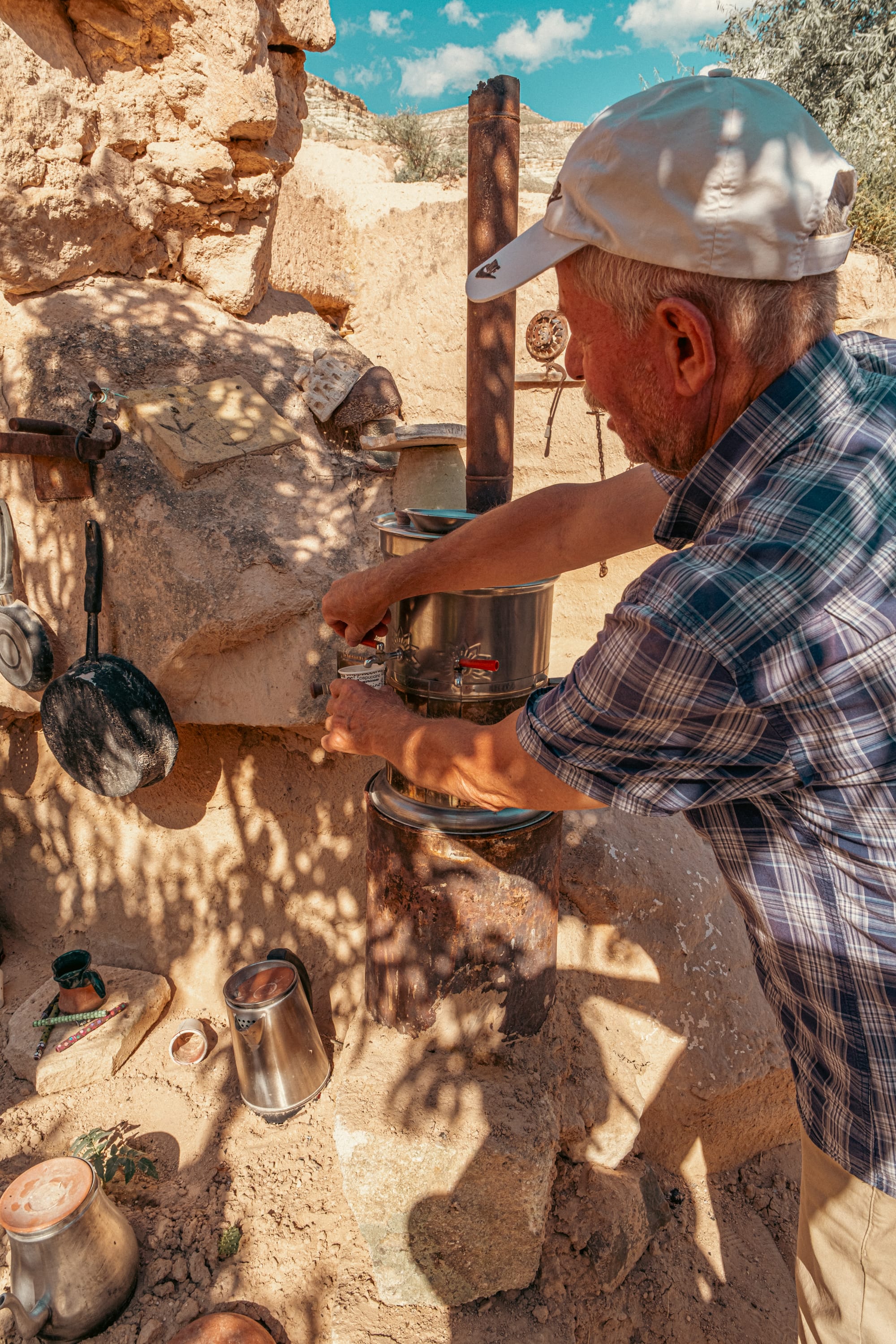
Tea prepared over a traditional samovar
From the cactus blooms in the courtyard to the vast sweep of the mountains behind, it offers both intimacy and scale. It’s a place to wander slowly, to notice small details, and to feel how the present carries the weight—and warmth—of the past.






